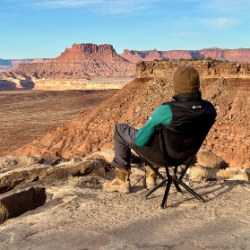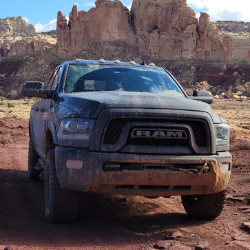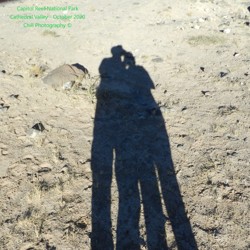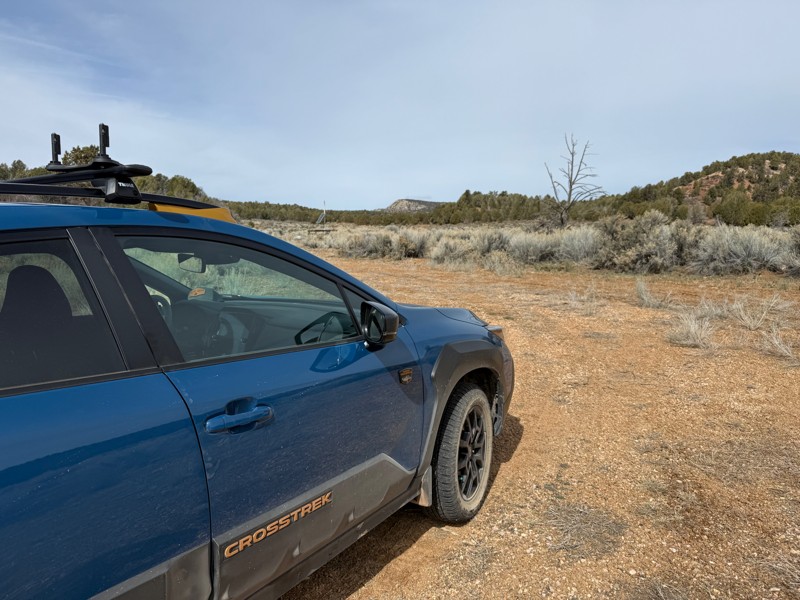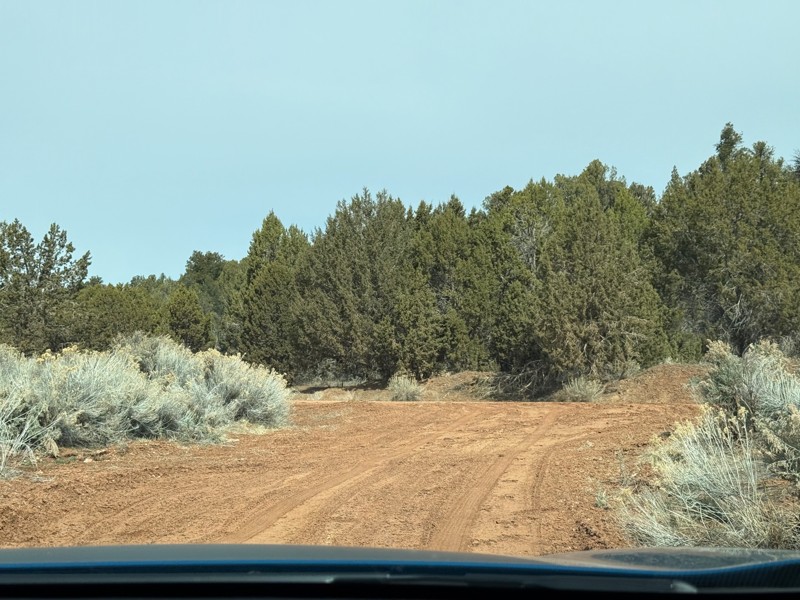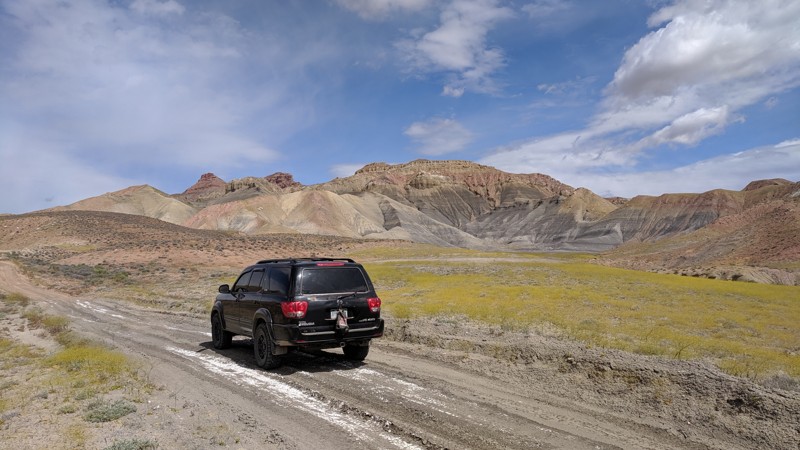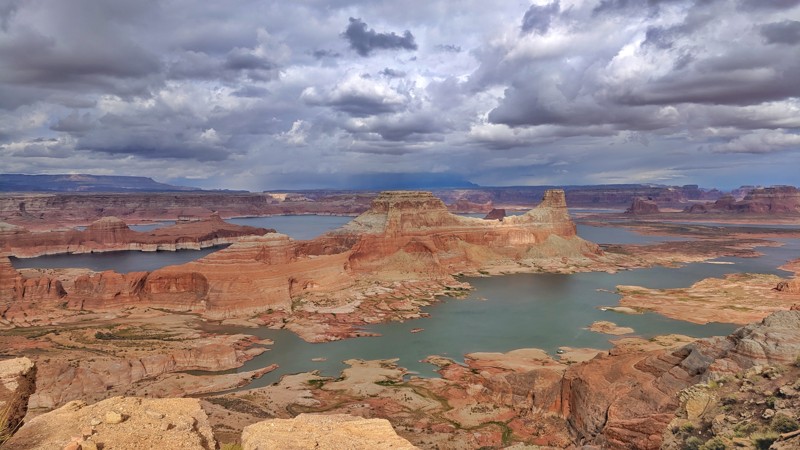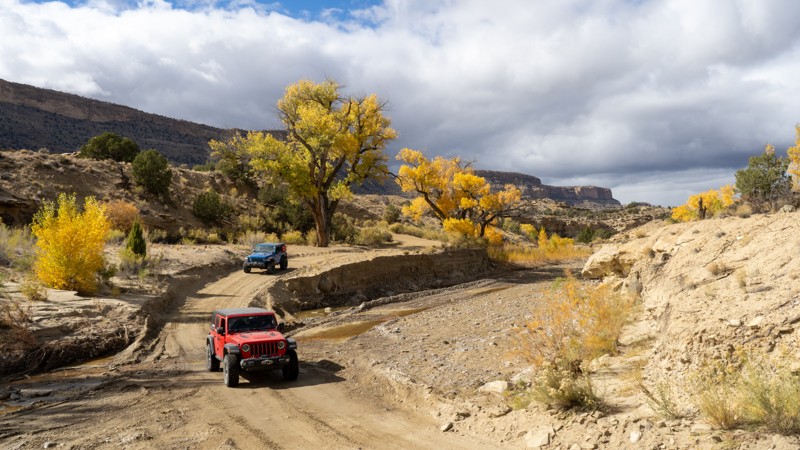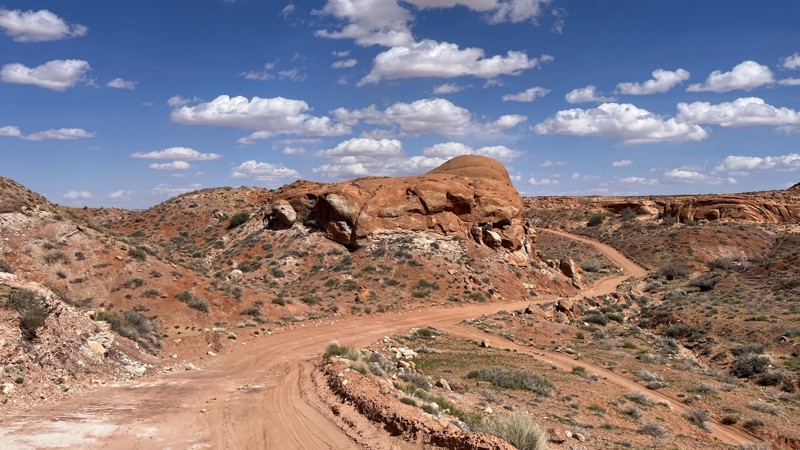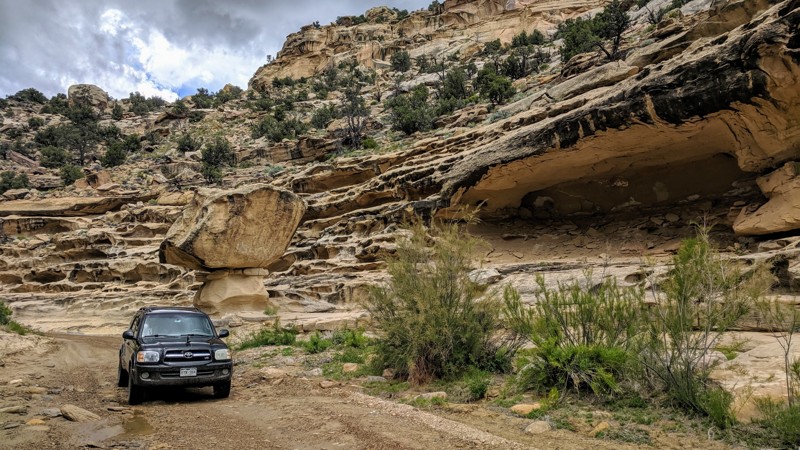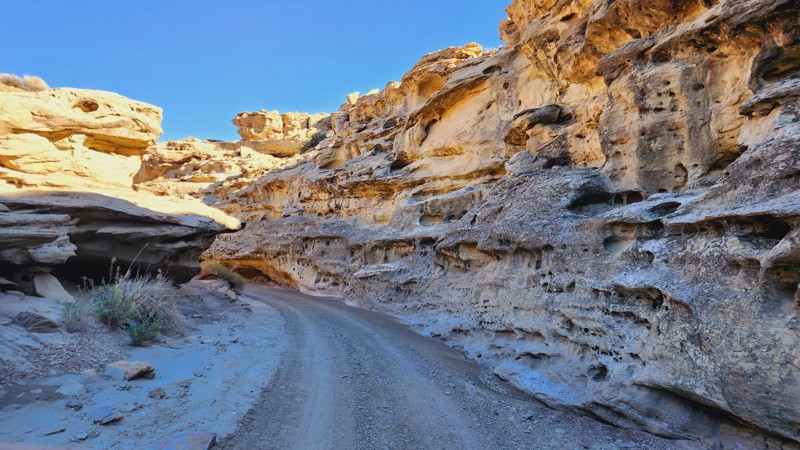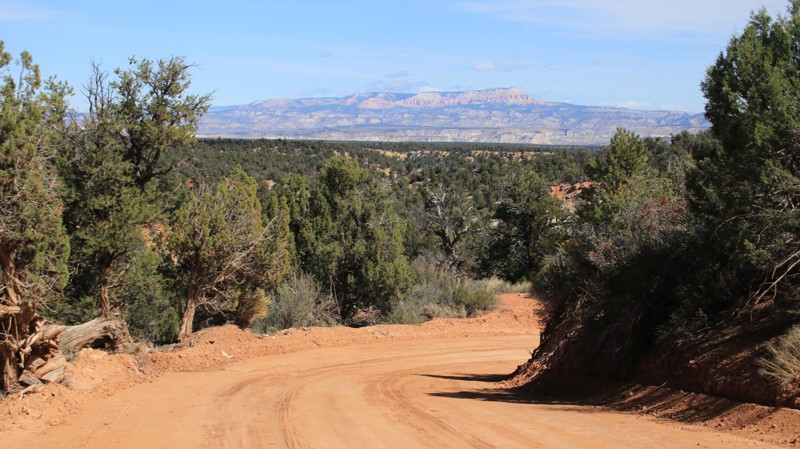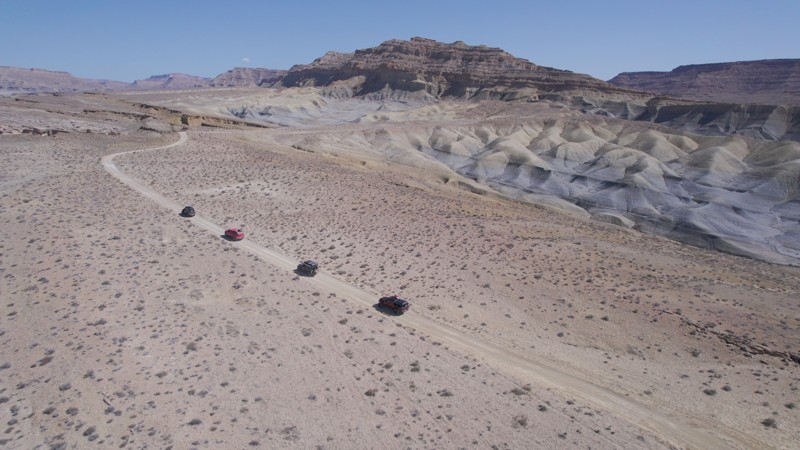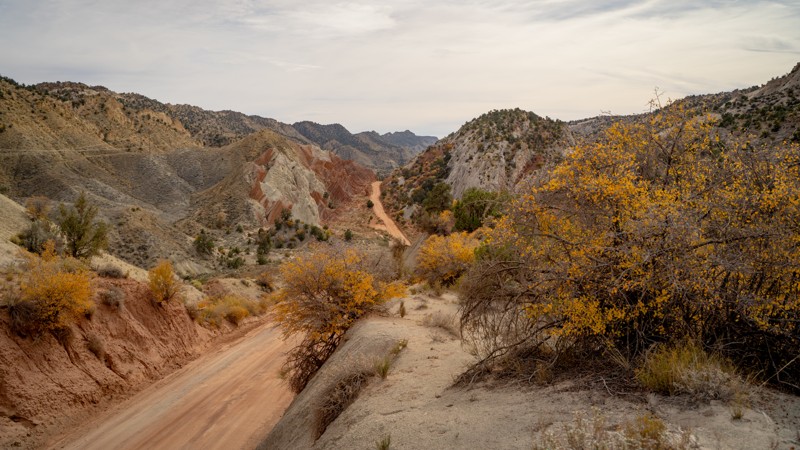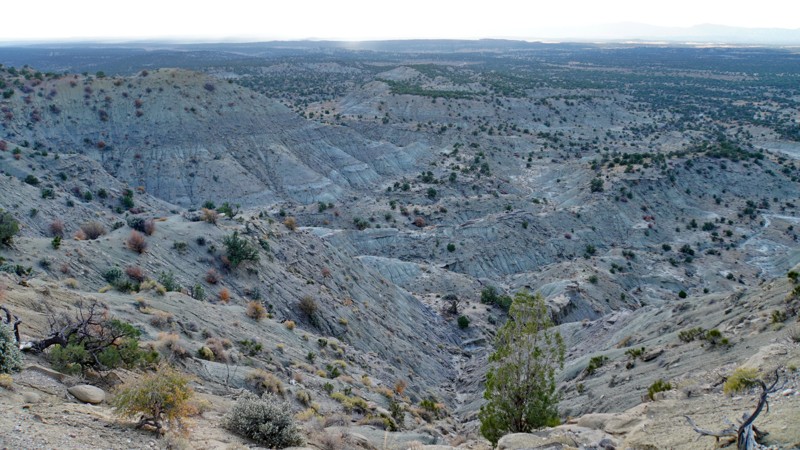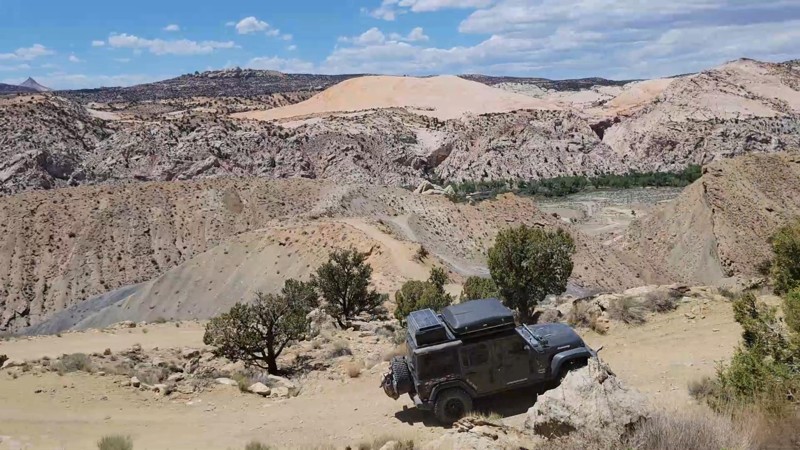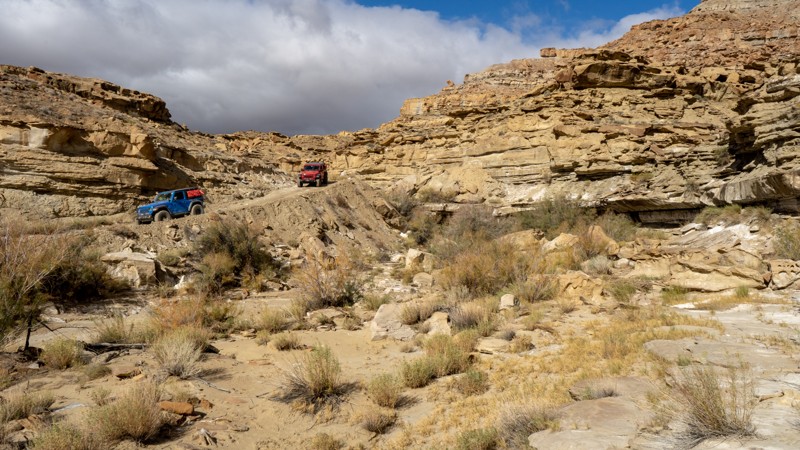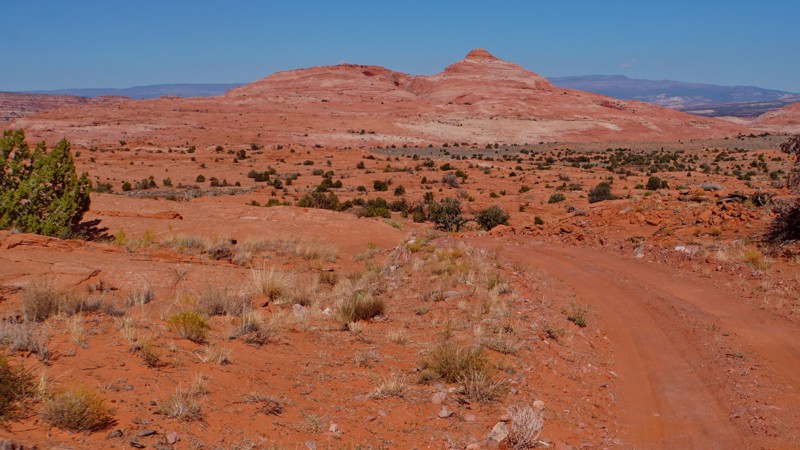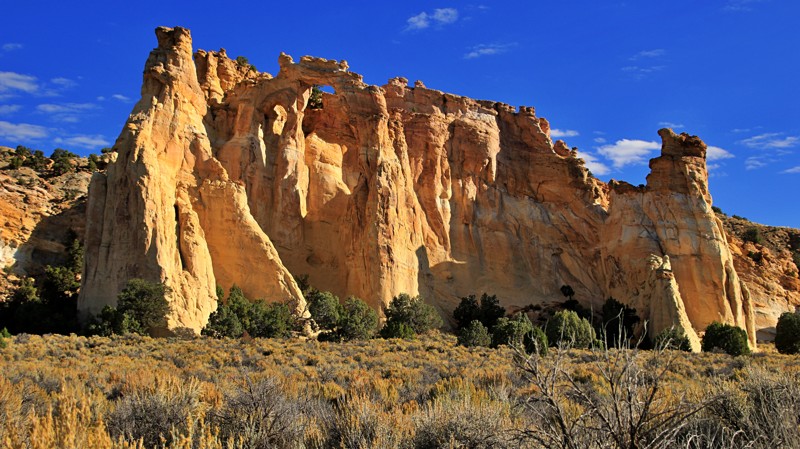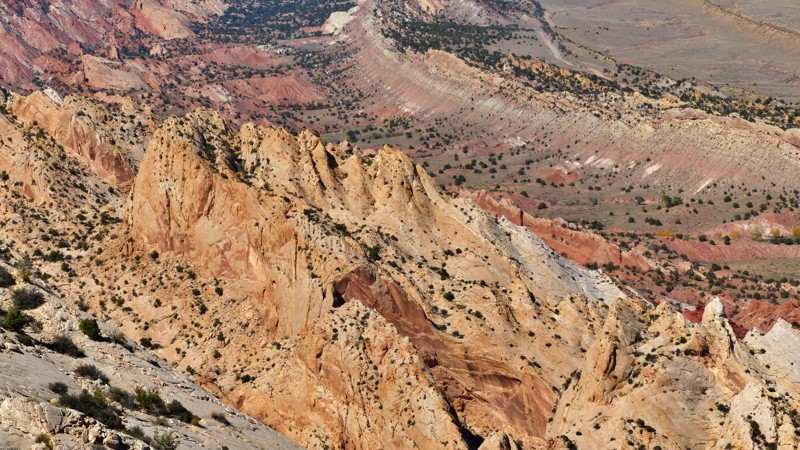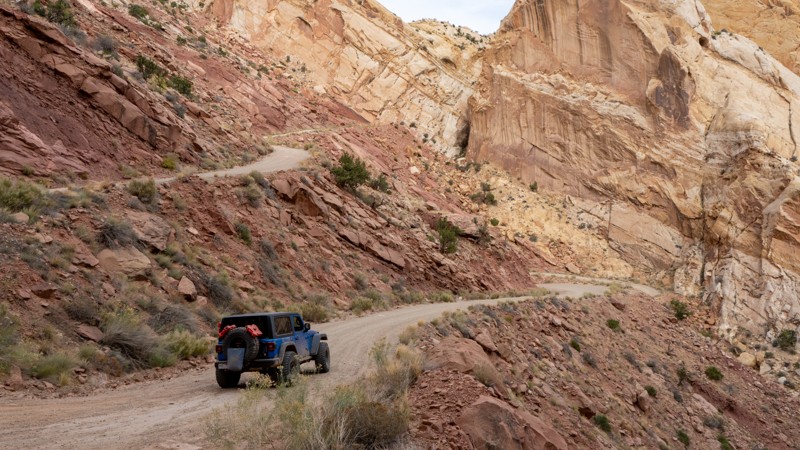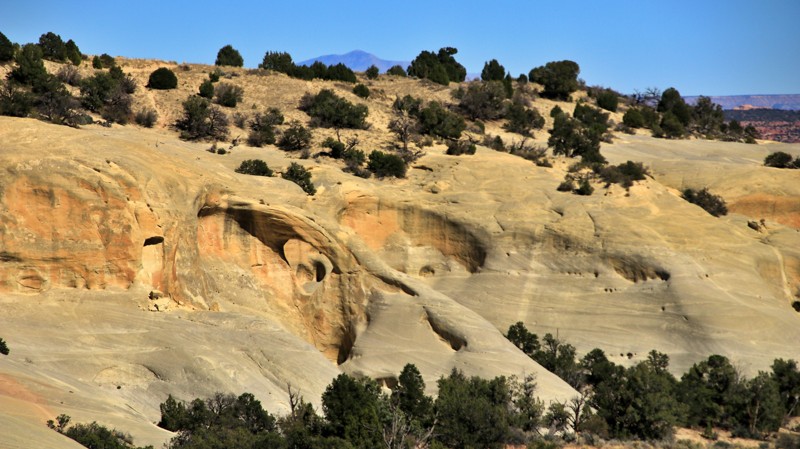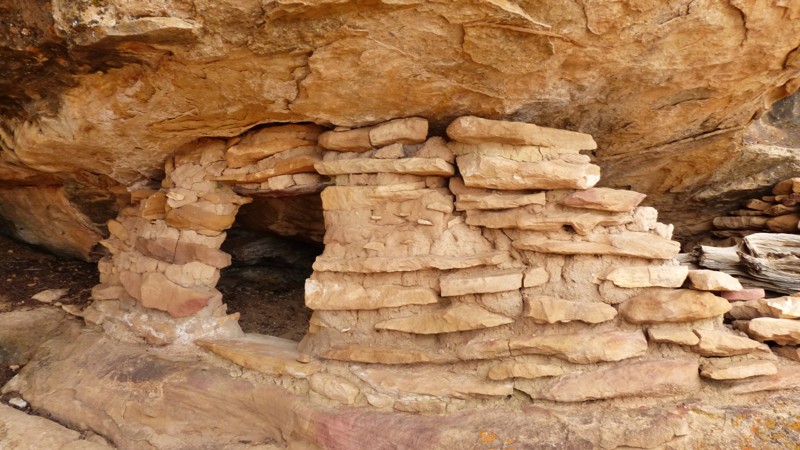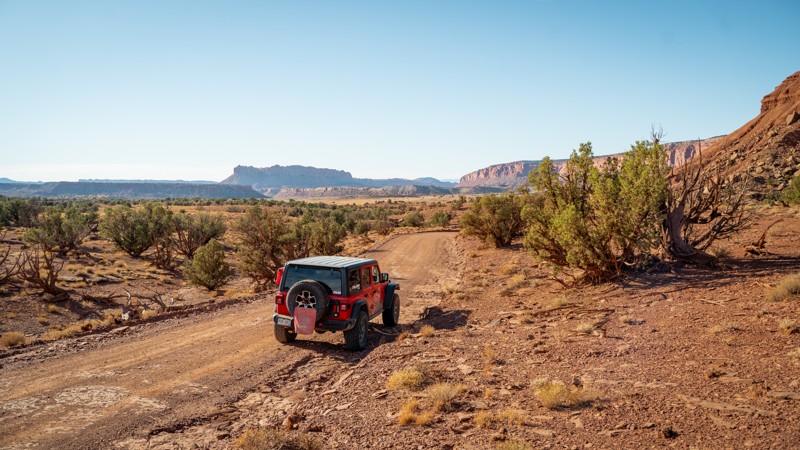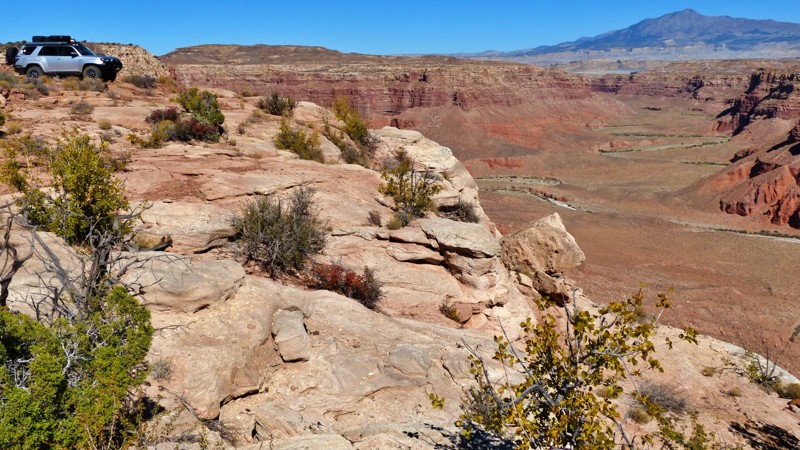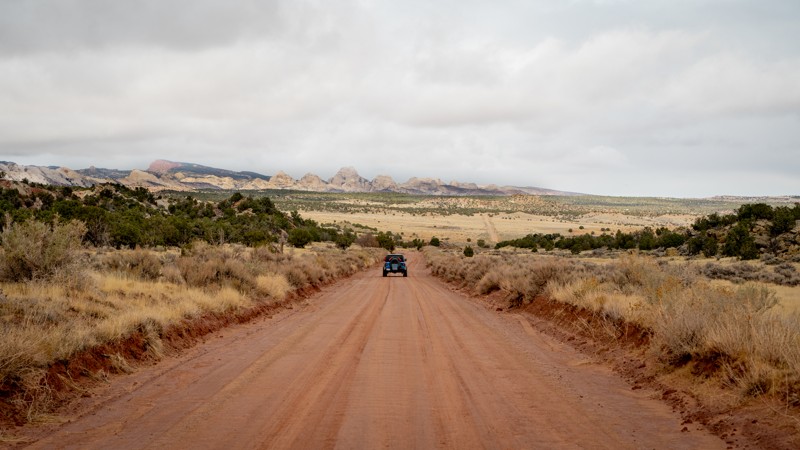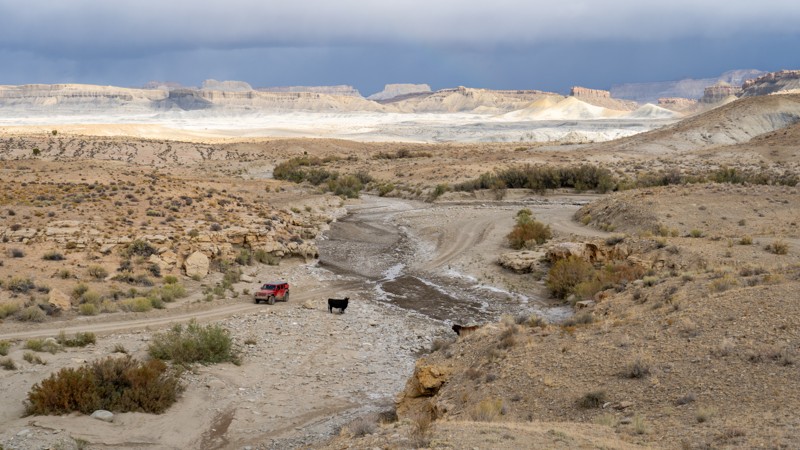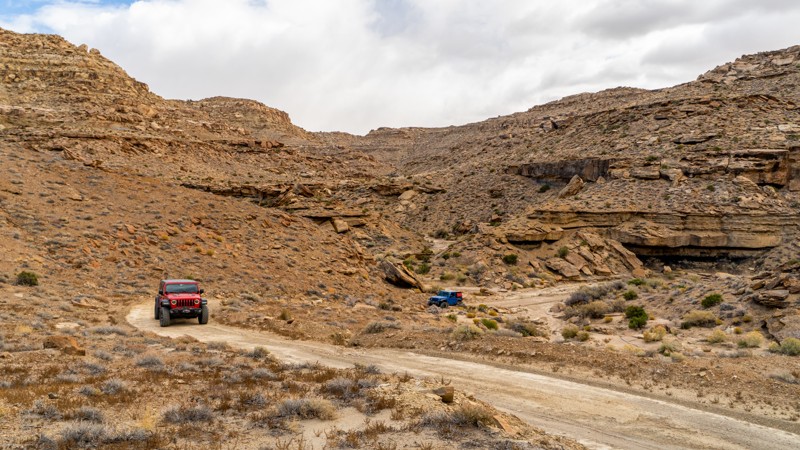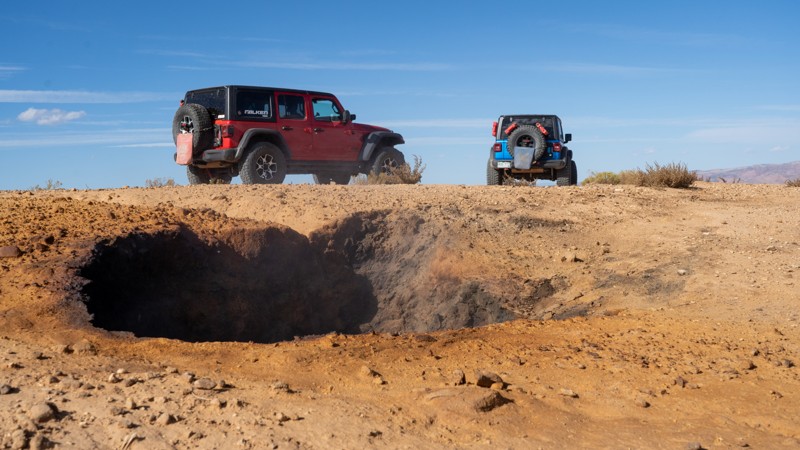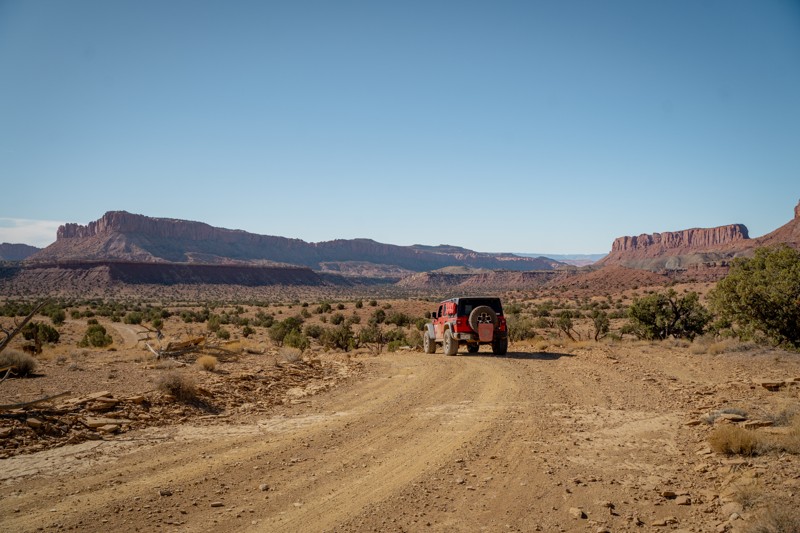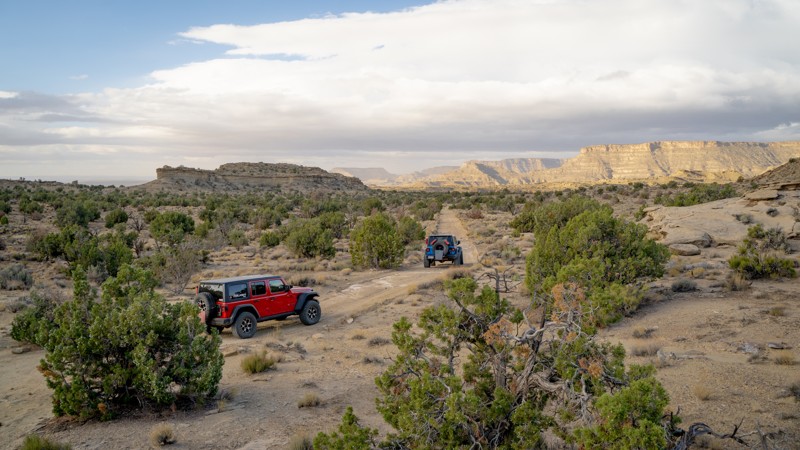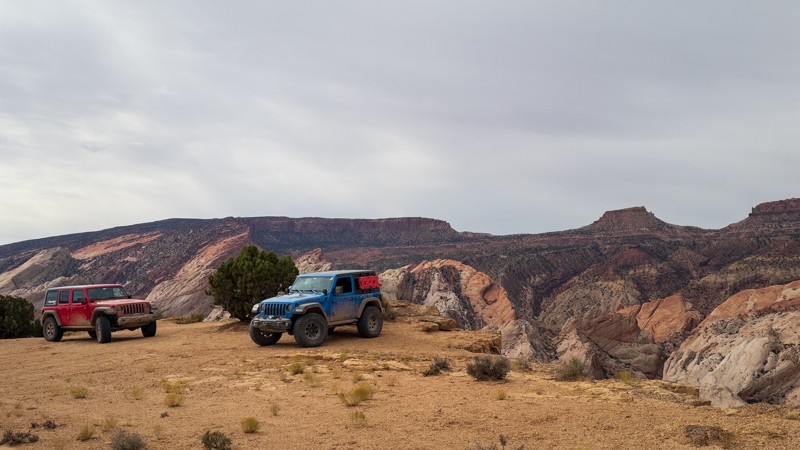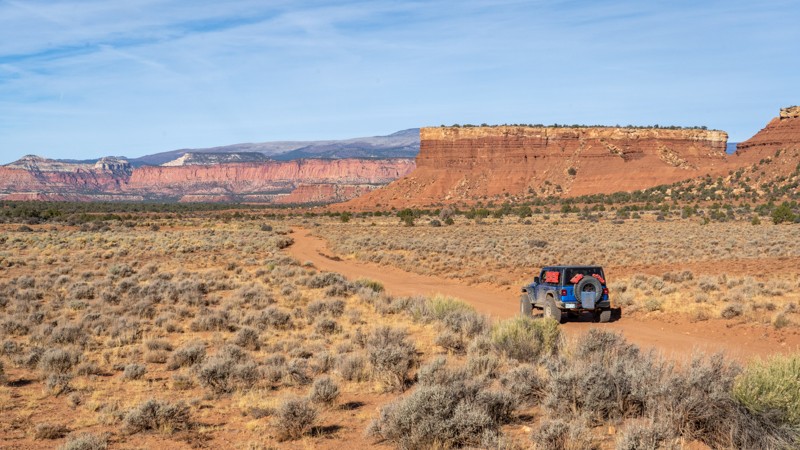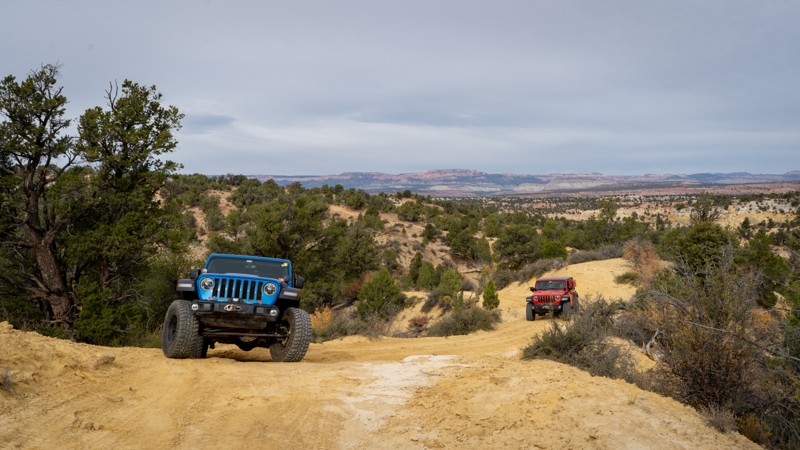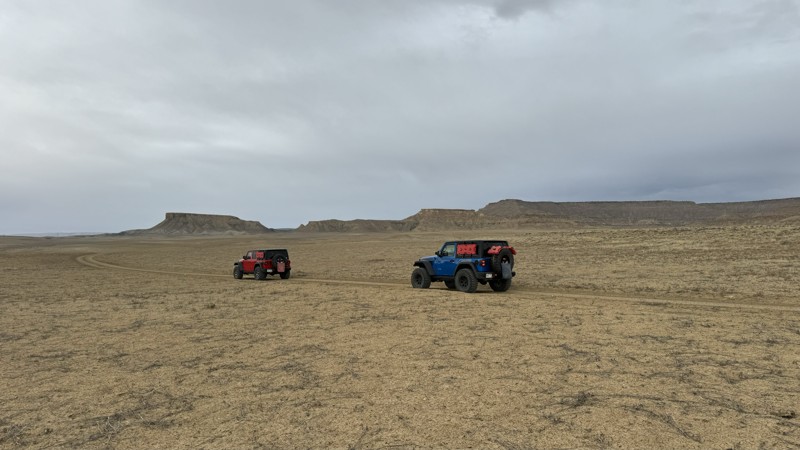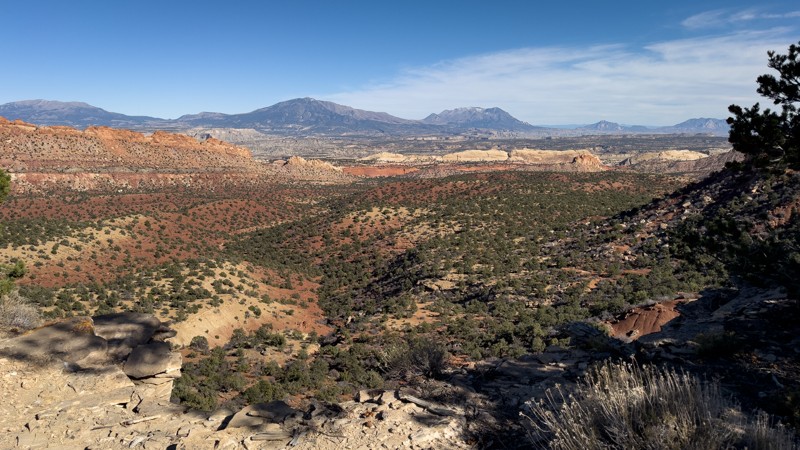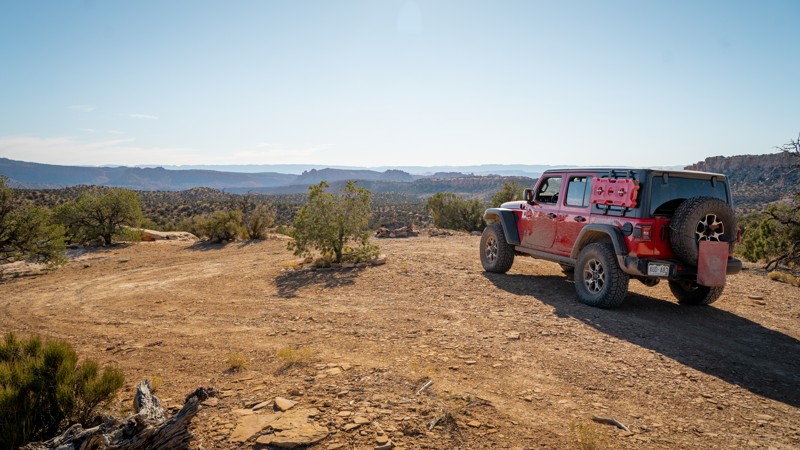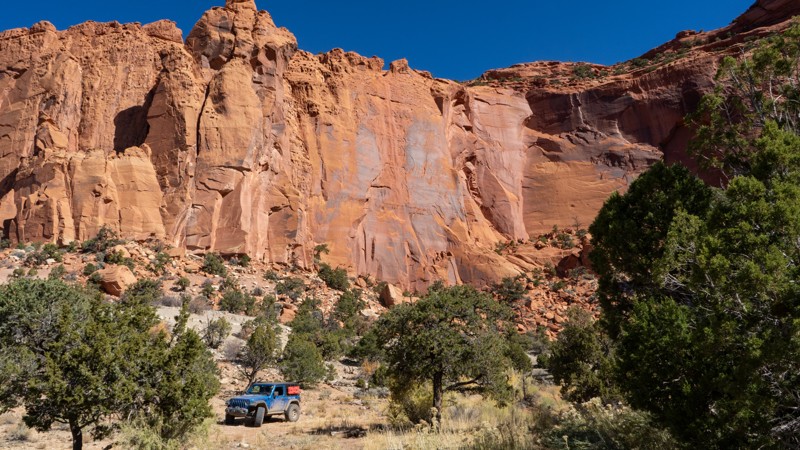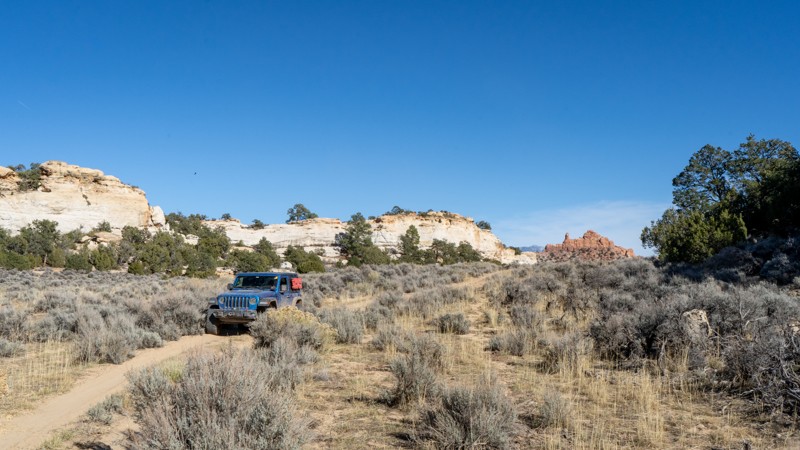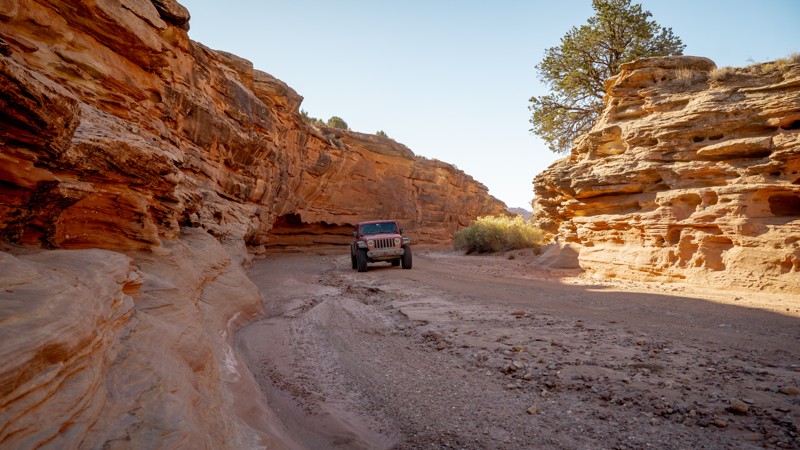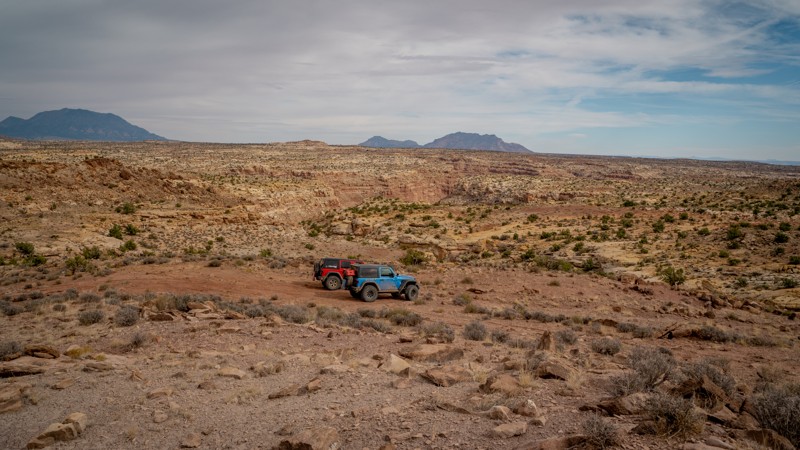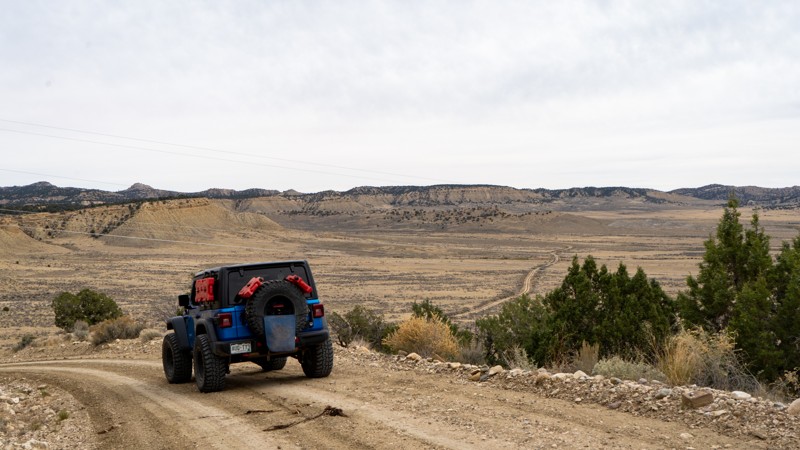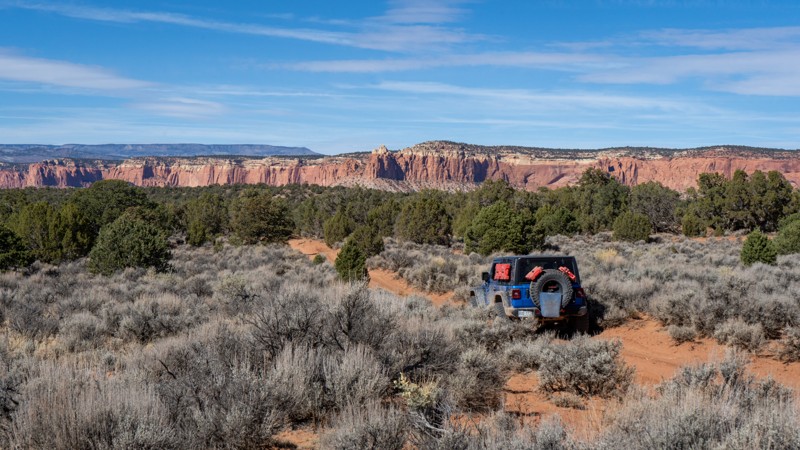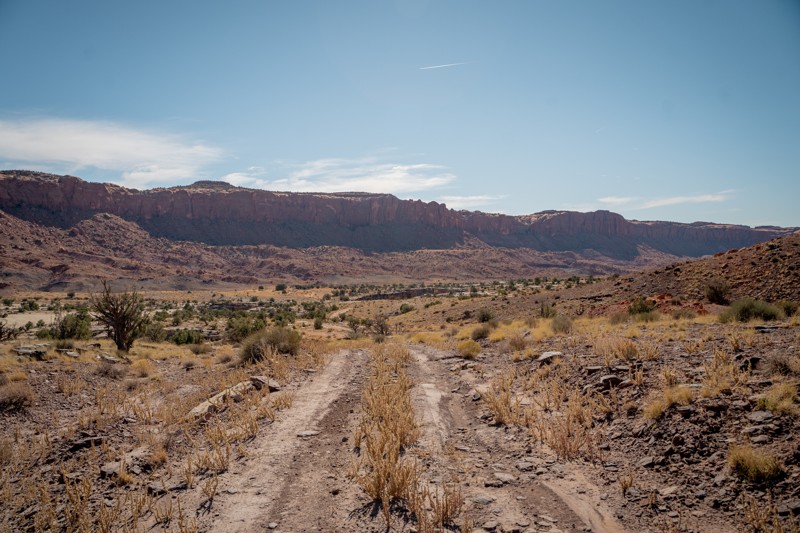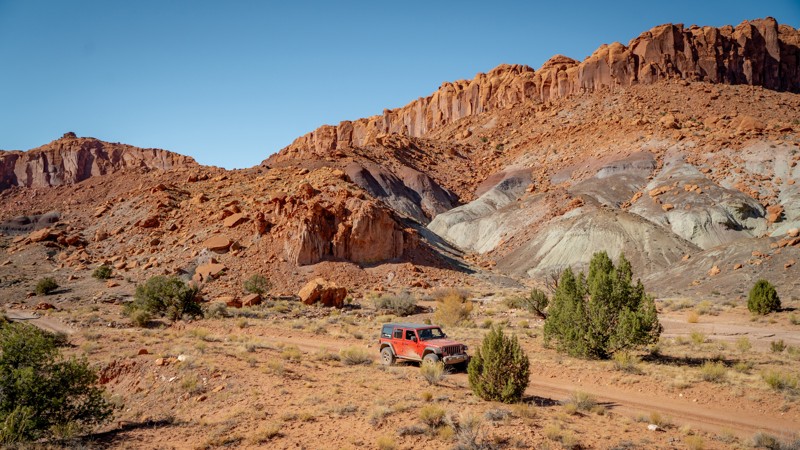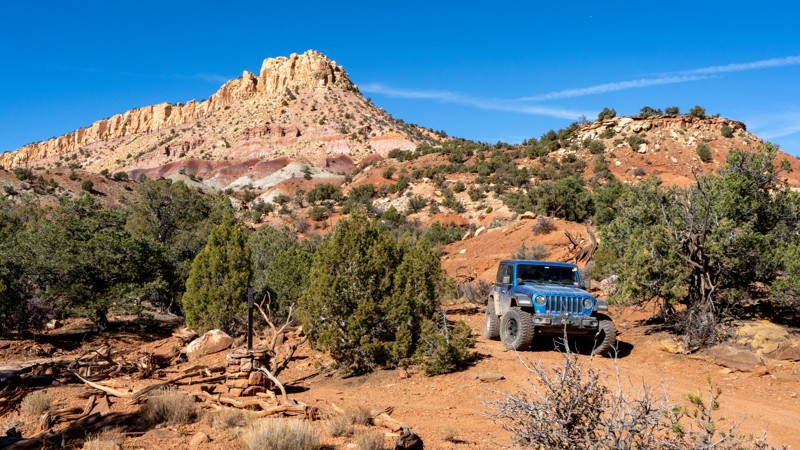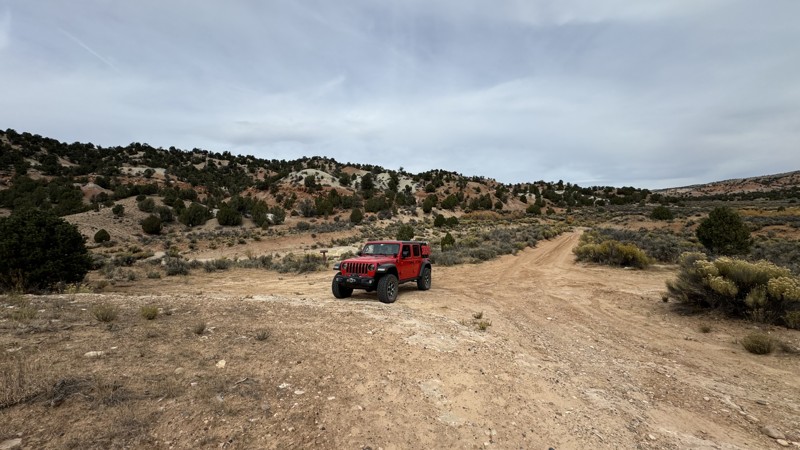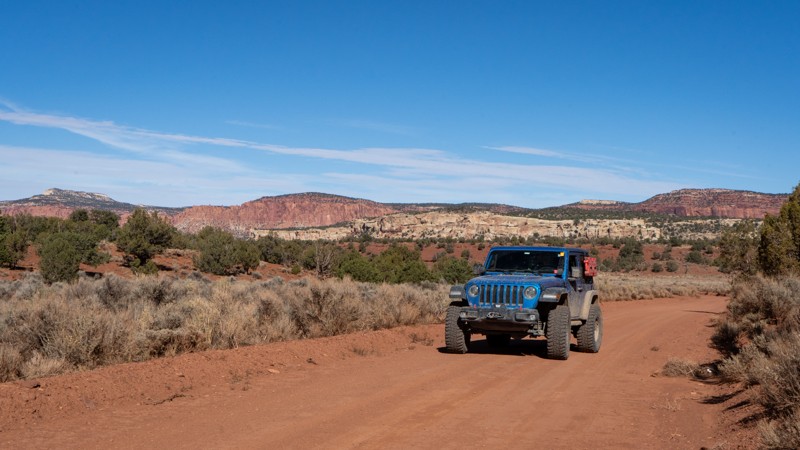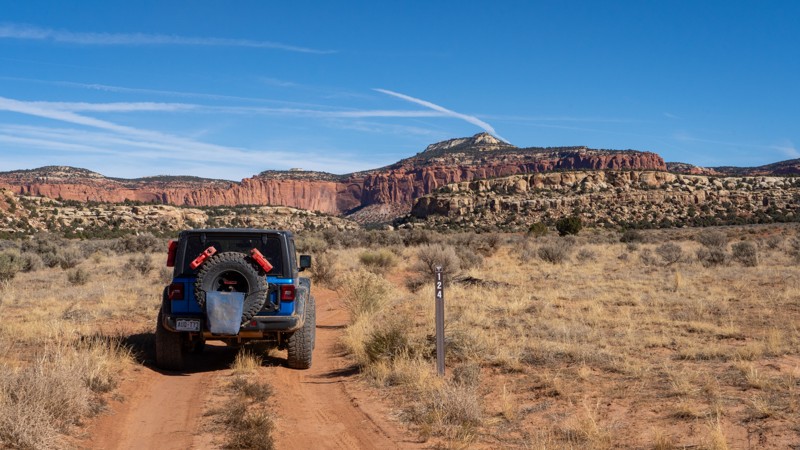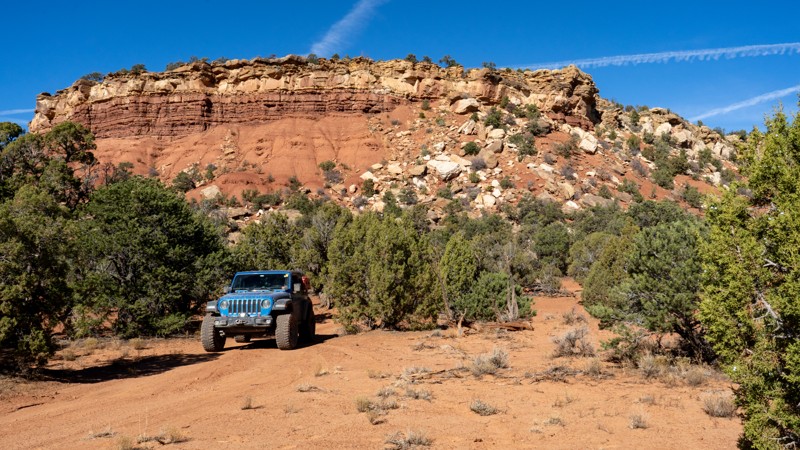By clicking "ACCEPT", you agree to be the terms and conditions of each policy linked to above. You also agree to the storing of cookies on your device to facilitate the operation and functionality of our site, enhance and customize your user experience, and to analyze how our site is used.
Offroad Trails in Grand Staircase-Escalante National Monument
Grand Staircase–Escalante National Monument: Where the Desert Keeps Its Secrets
Overview
Grand Staircase–Escalante National Monument spans nearly one million acres of southern Utah canyon country. This vast wilderness of slickrock, slot canyons, and sandstone plateaus remains one of the most remote and least developed regions in the continental United States. Managed by the Bureau of Land Management, the monument protects a sweeping sequence of geologic “steps” stretching from the cliffs of Bryce Canyon to the desert rim of the Colorado River. It’s a land shaped by time, water, and solitude—where exploration feels raw and endless.
Getting There
The monument is accessible from several small towns: Escalante and Boulder on Scenic Highway 12, Kanab to the south, and Big Water along Highway 89. Each provides fuel, food, and limited lodging before entering the monument’s backroads. Most major routes are graded dirt and can be traveled by high-clearance vehicles in dry conditions, but sudden storms can quickly make travel hazardous. Always check the weather and road conditions before setting out.
Trails
The network of primitive roads in Grand Staircase–Escalante offers some of the most rewarding overland routes in Utah. Each trail reveals a different character of the monument’s layered landscape:
- Hole-in-the-Rock Road is the monument’s most famous backroad, leading deep into slickrock country with access to slot canyons like Peek-a-Boo and Spooky Gulch. The road follows the path of the original Mormon pioneers who carved their way toward the Colorado River in 1879.
- Smoky Mountain Road climbs from Big Water to Escalante across a stark, high-desert plateau with wide horizons and incredible geology. It’s remote, rough, and breathtaking, often requiring several hours to traverse.
- Cottonwood Canyon Road connects Highway 89 to Kodachrome Basin, winding through colorful badlands, hoodoos, and the striking Paria River canyon. It’s one of the most photogenic drives in southern Utah and passable in most dry conditions.
- Burr Trail begins near Boulder and descends through the Waterpocket Fold, offering dramatic switchbacks, towering cliffs, and access to Capitol Reef’s remote southern reaches.
Camping
Dispersed camping is allowed throughout the monument, with hundreds of established pullouts and primitive sites along main routes. Sites are generally flat, scenic, and offer complete solitude, though no amenities are provided. Visitors should follow Leave No Trace principles—pack out all waste, minimize fire impact, and camp on previously disturbed surfaces. For those preferring developed facilities, campgrounds near Escalante, Boulder, and Kodachrome Basin State Park offer vault toilets and water.
Free permits are required for all overnight stays within Grand Staircase-Escalante National Monuments. You can get these permits at visitor centers or at developed trailheads. Additionally, certain high-traffic areas require special recreational permits, which are issued through a lottery system.
Wildlife & Seasons
Spring and fall are ideal seasons for travel, bringing mild days and cool nights. Summer heat can exceed 100°F, while flash floods and washed-out roads are common during the monsoon season. Wildlife sightings include desert bighorn sheep, mule deer, golden eagles, and the occasional coyote silhouetted against red rock at sunset. The quiet here is profound—broken only by wind and the echo of canyon wrens.
Nearby Attractions
Visitors can pair their trip with nearby destinations such as Bryce Canyon National Park, Capitol Reef National Park, or the Paria Rimrocks. Scenic Highway 12 itself is a world-class drive, linking many of these highlights while offering views of Escalante’s sweeping canyons and sandstone domes.
Why Visit
Grand Staircase–Escalante is for travelers who crave true wilderness and discovery. Its endless backroads, hidden canyons, and remote campsites reward patience and preparation. Here, exploration feels timeless—each mile unfolding a new layer of color, history, and silence. For those who value solitude, scale, and the spirit of the open desert, there’s no place quite like it.
Top Reasons to Explore Here
Most Recent Trail Reviews
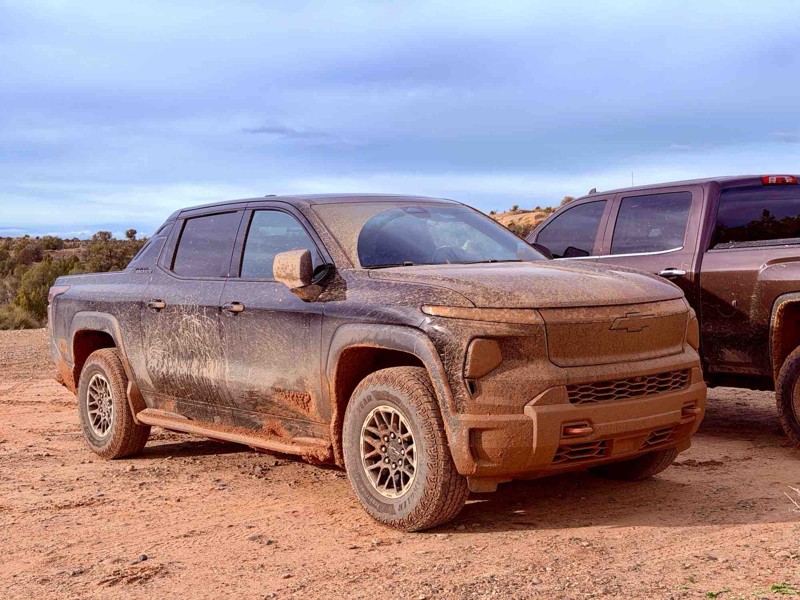
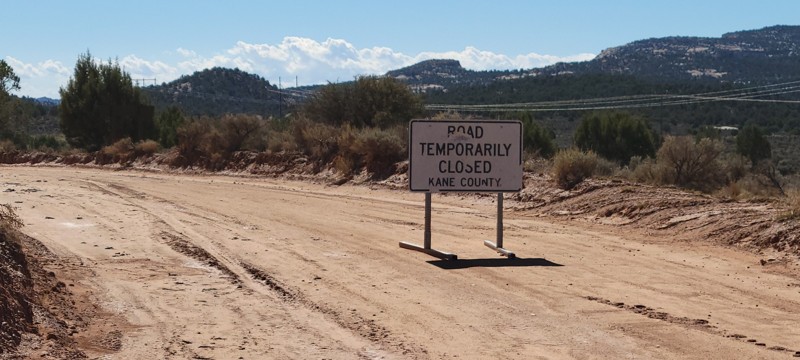
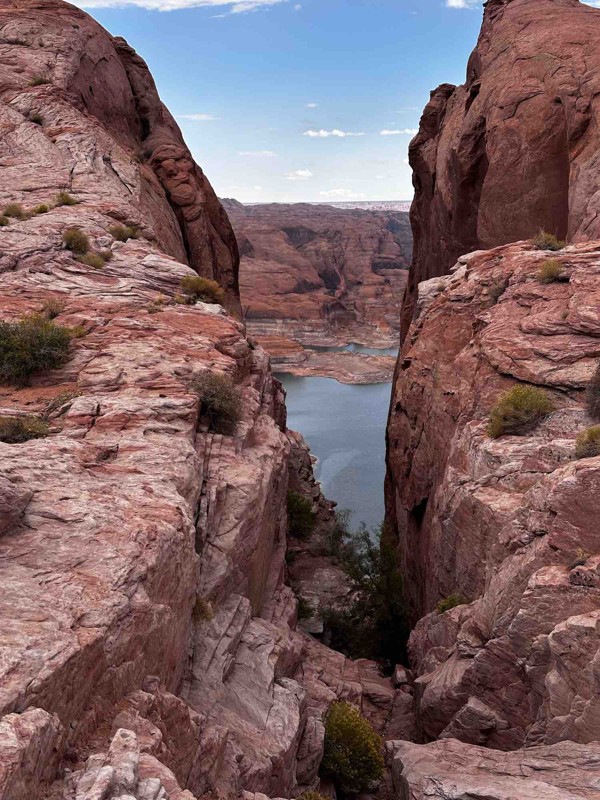
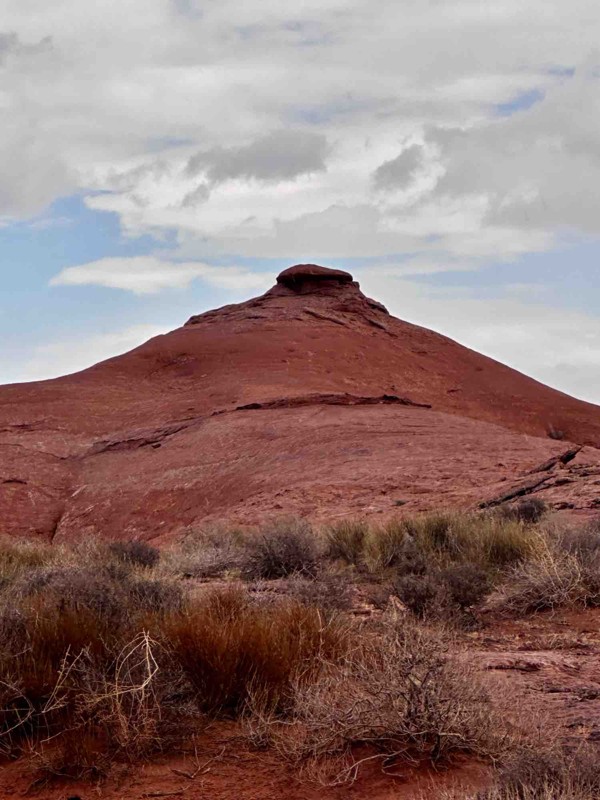
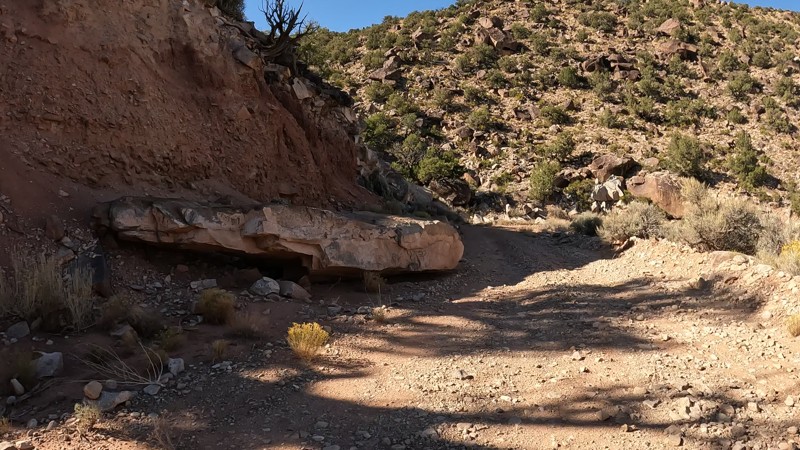
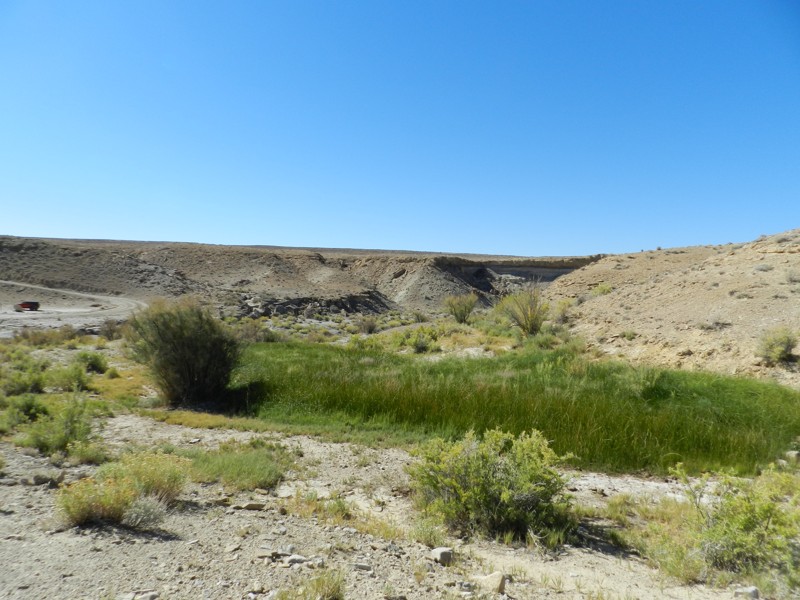
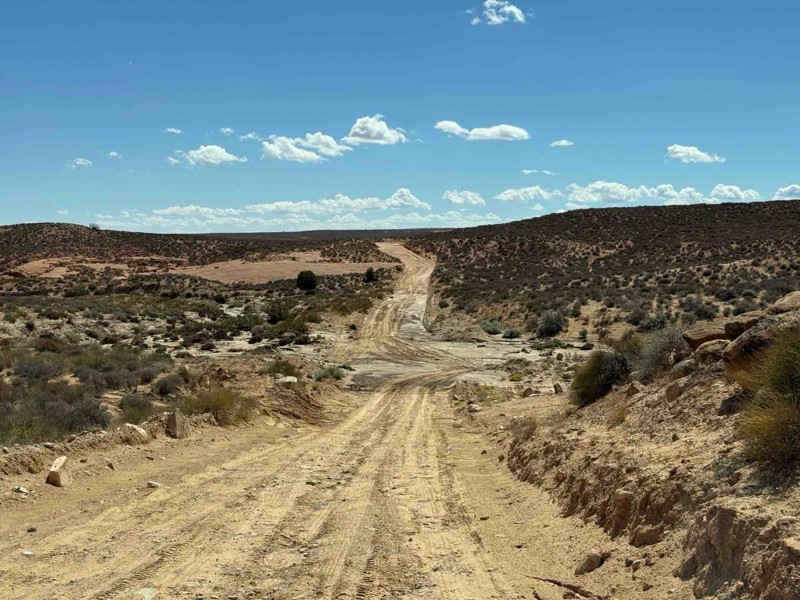
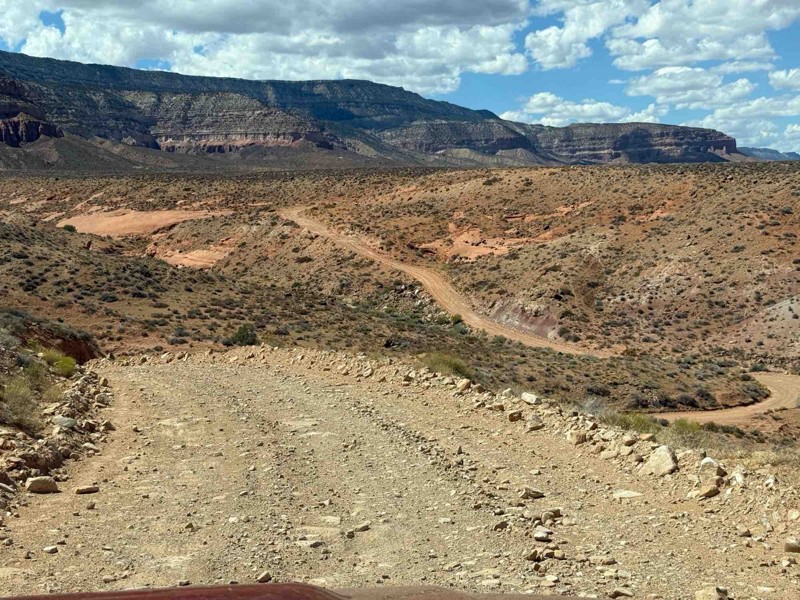


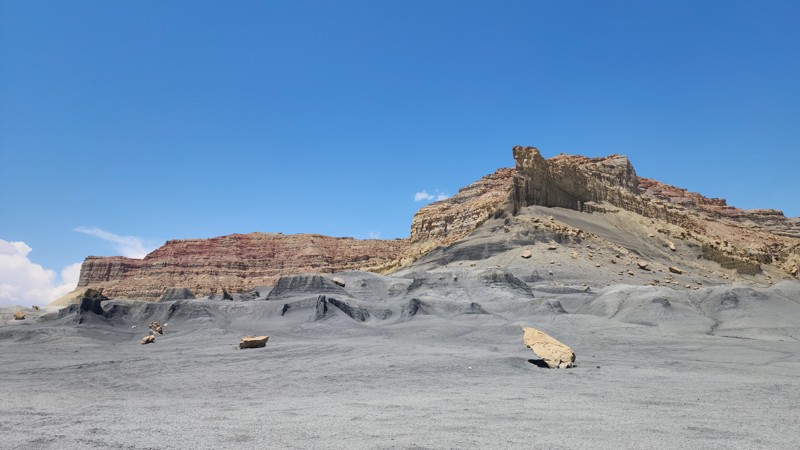
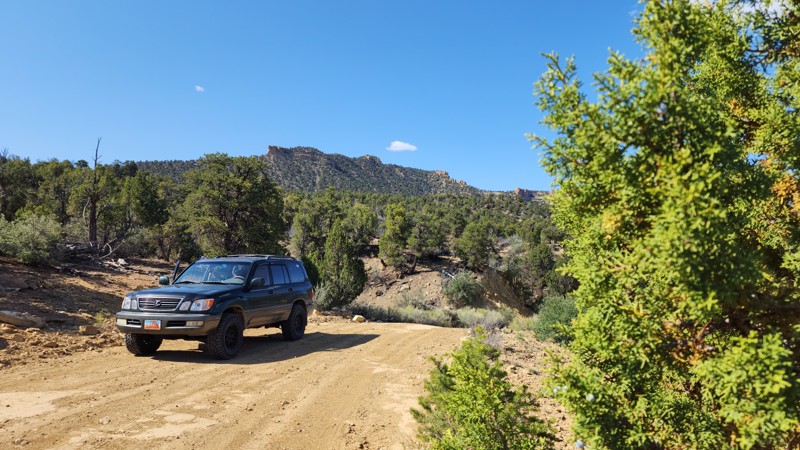
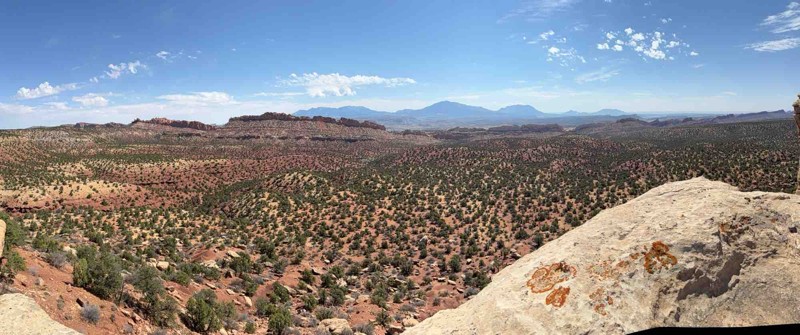
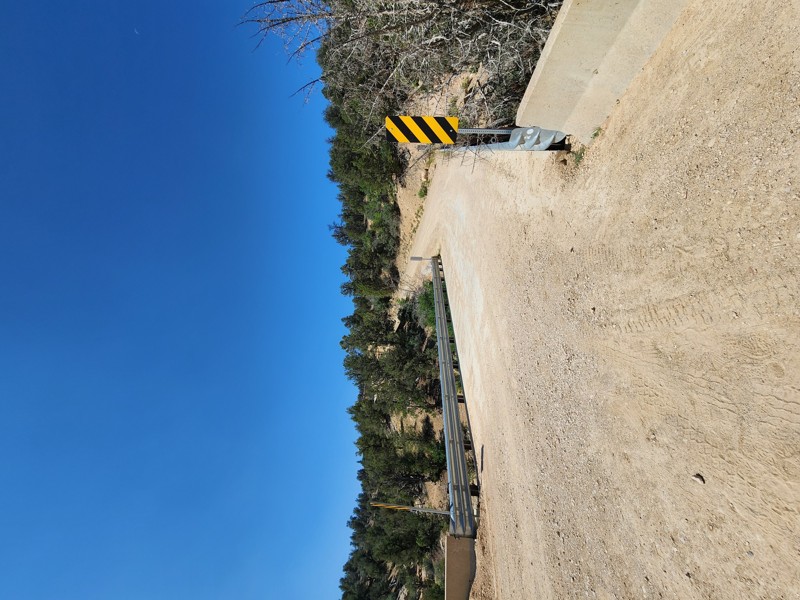
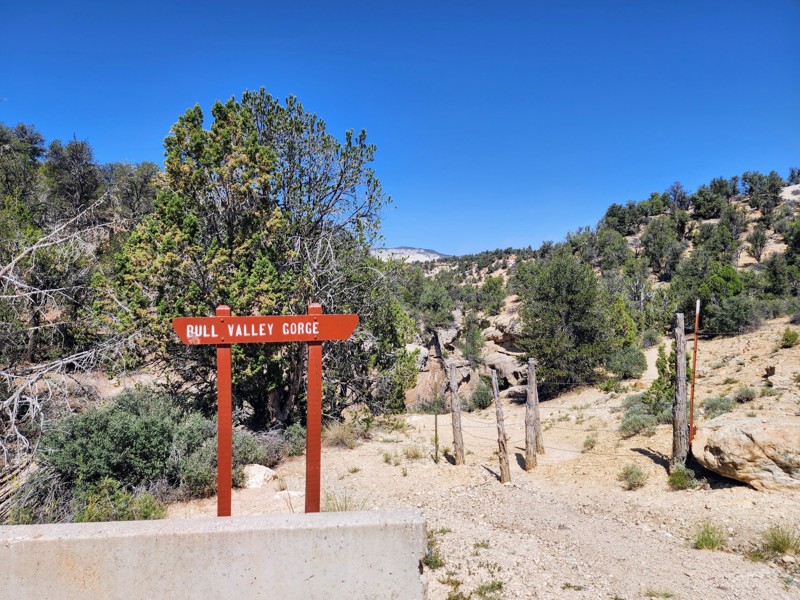
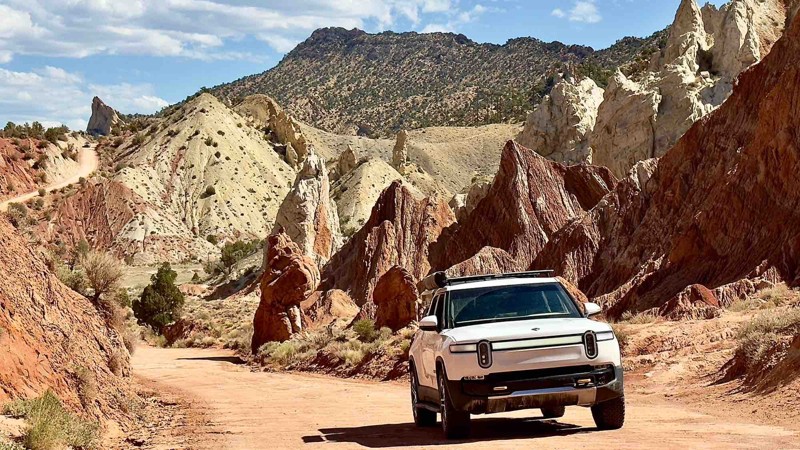
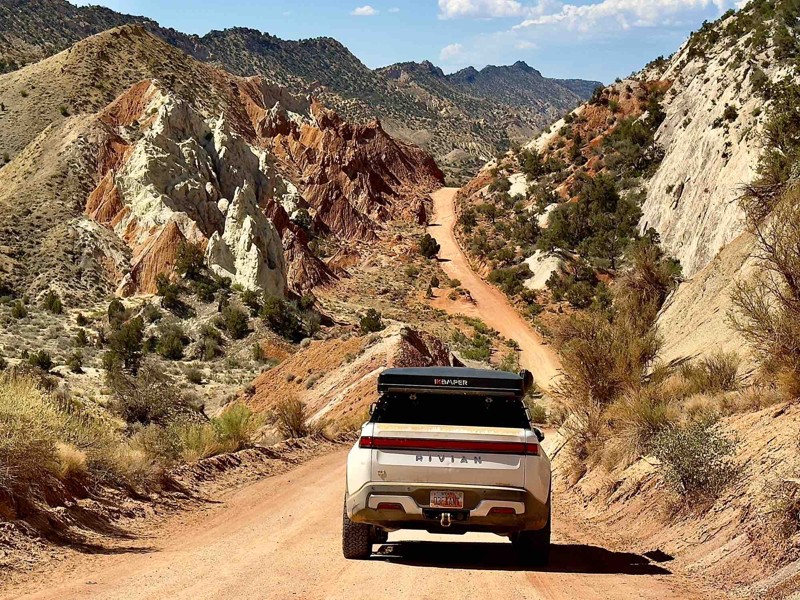
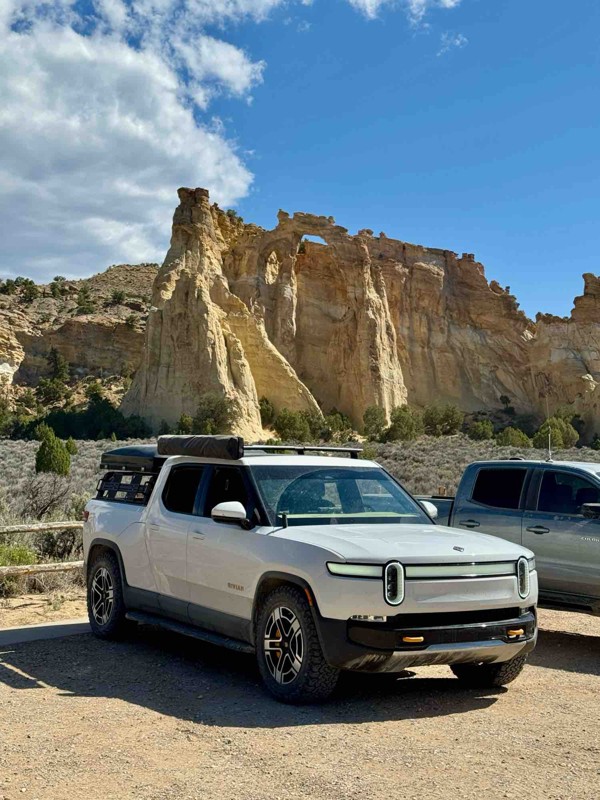
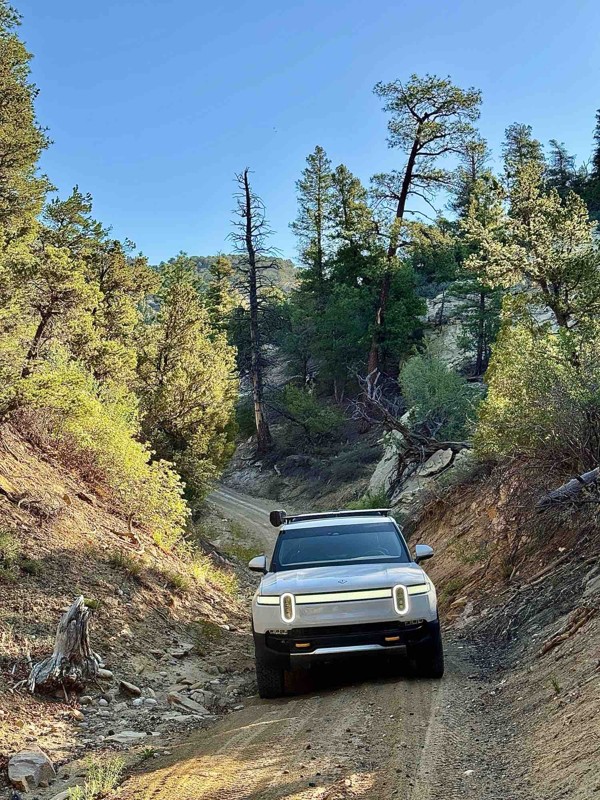
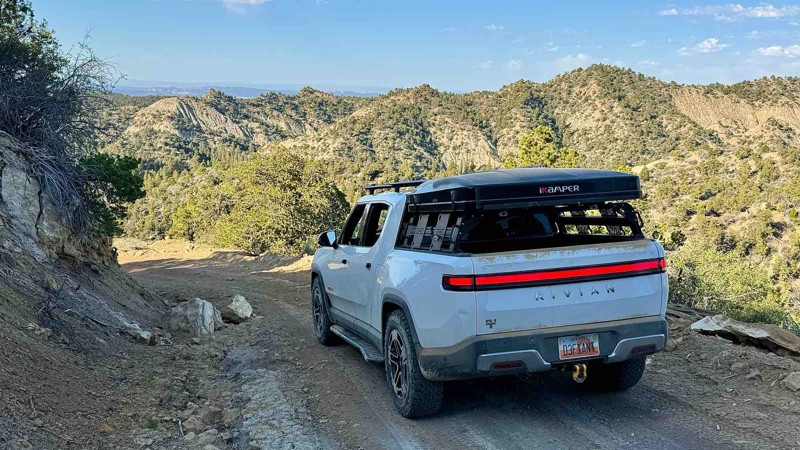
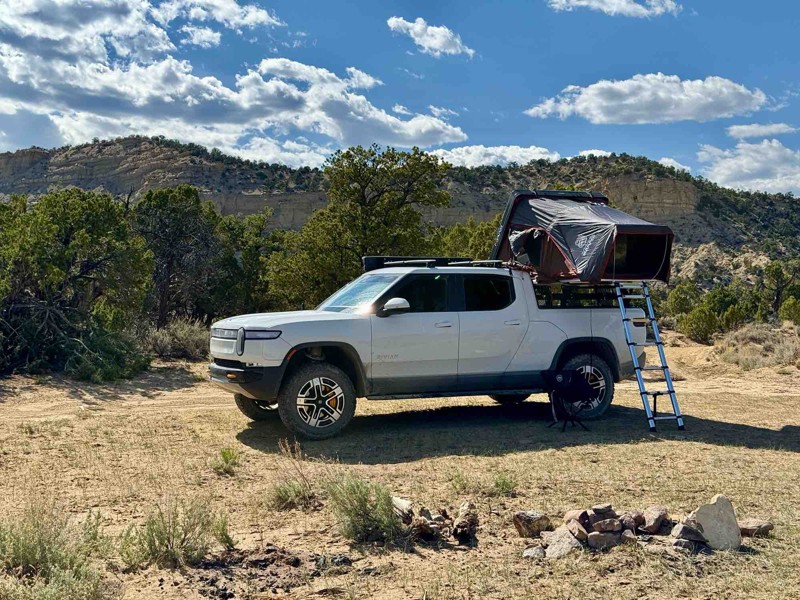
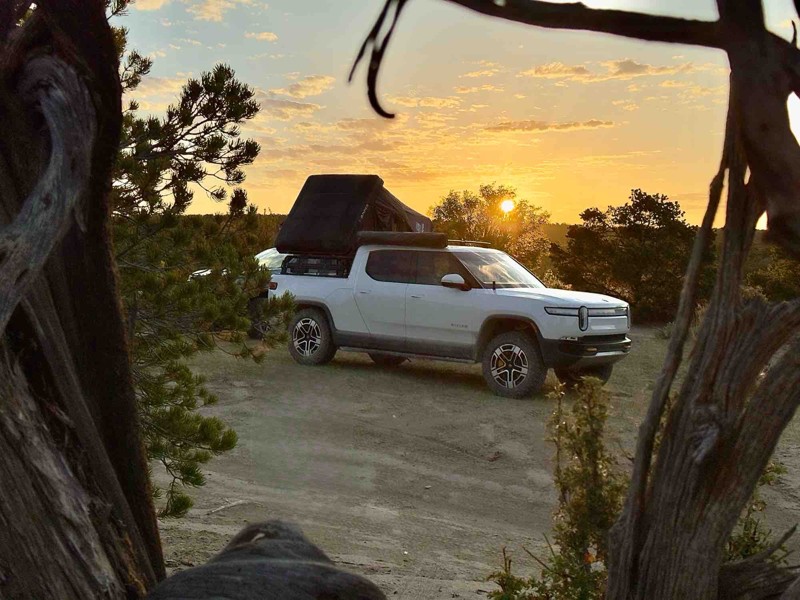
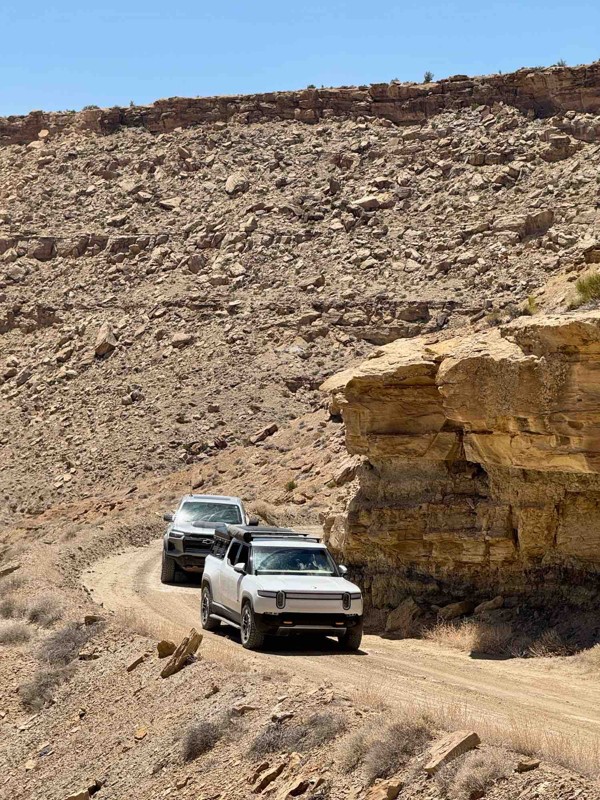
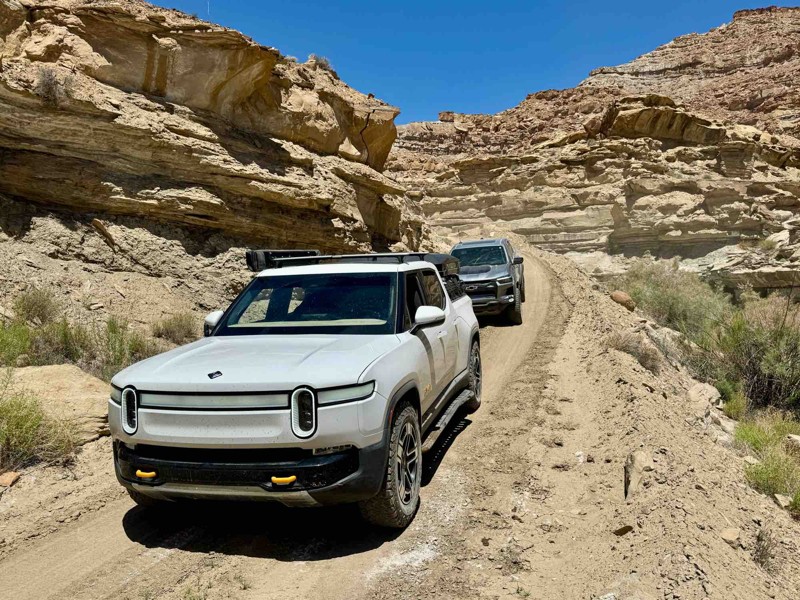
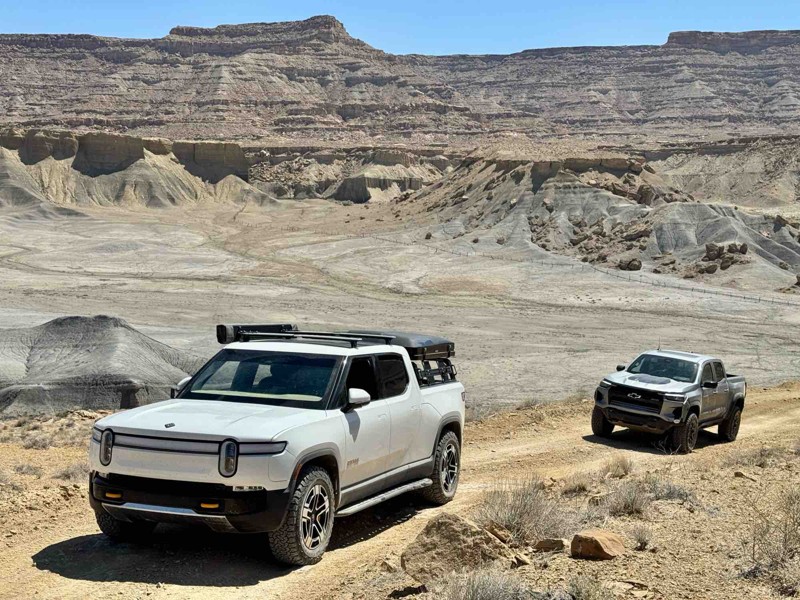
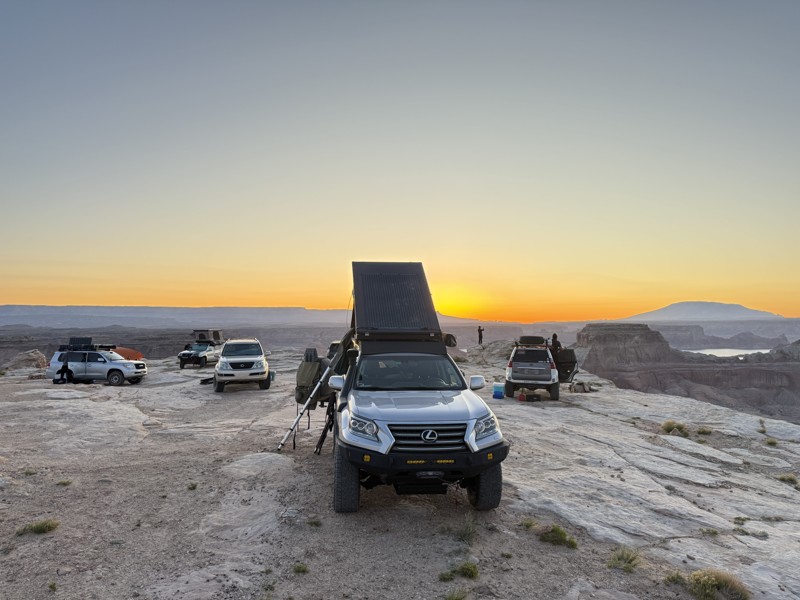
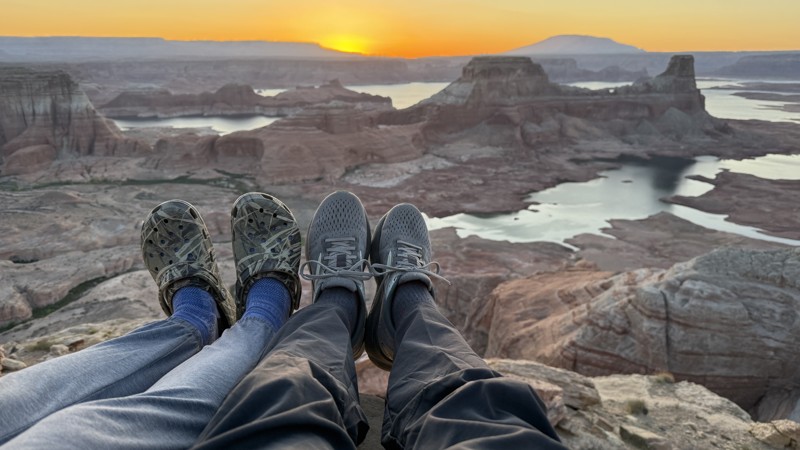
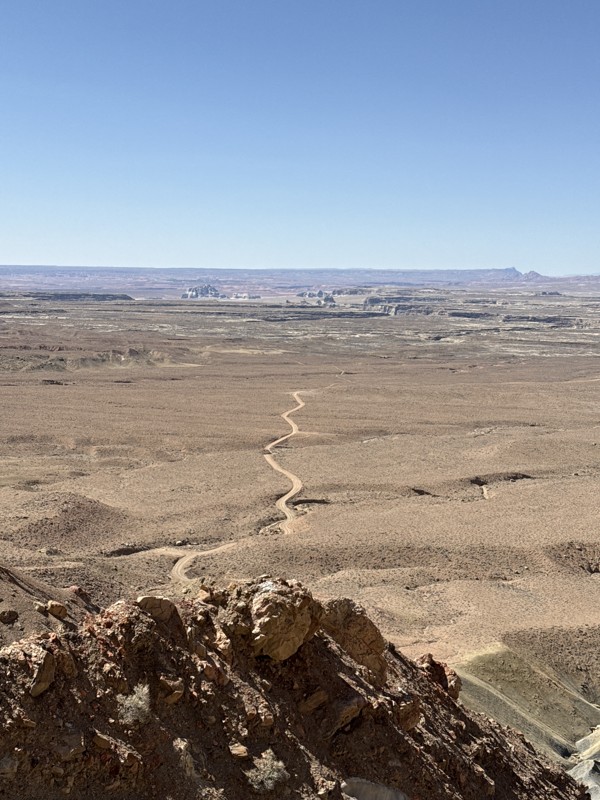
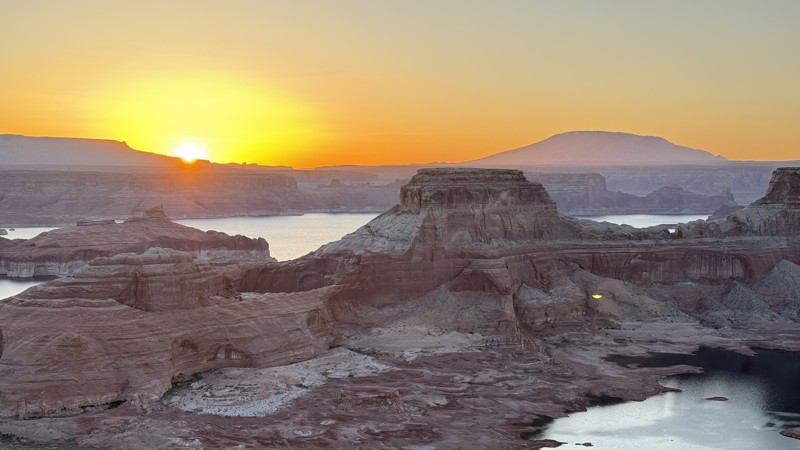
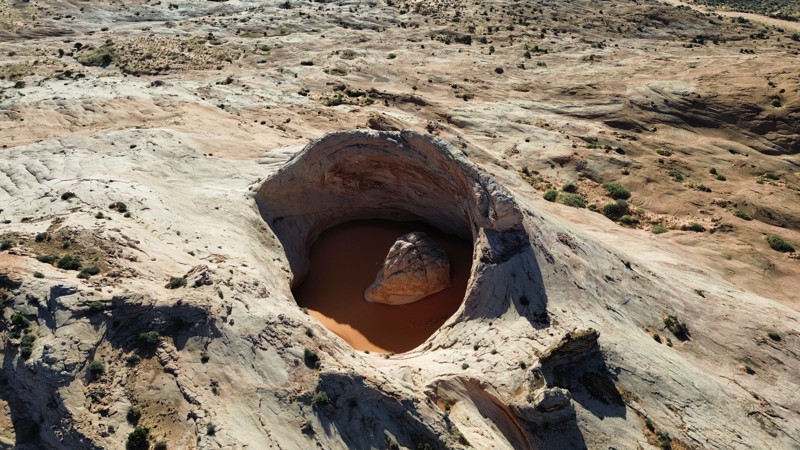
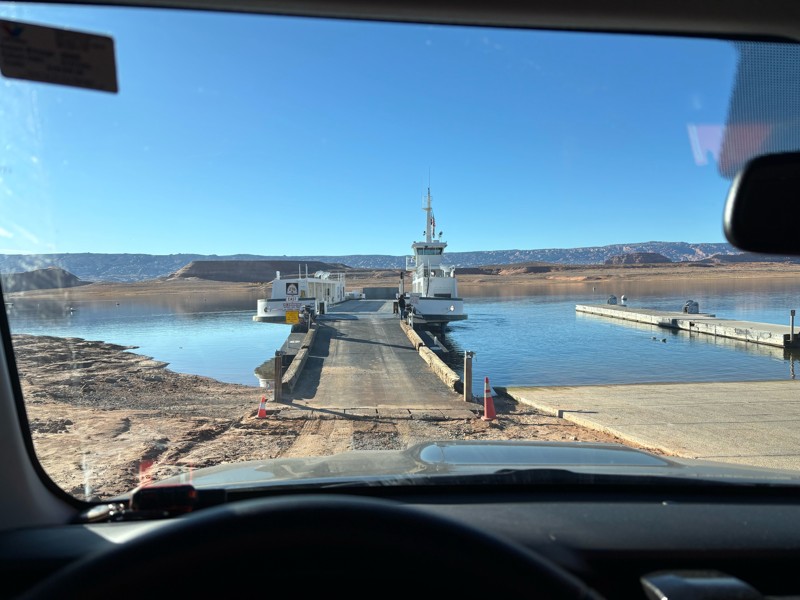
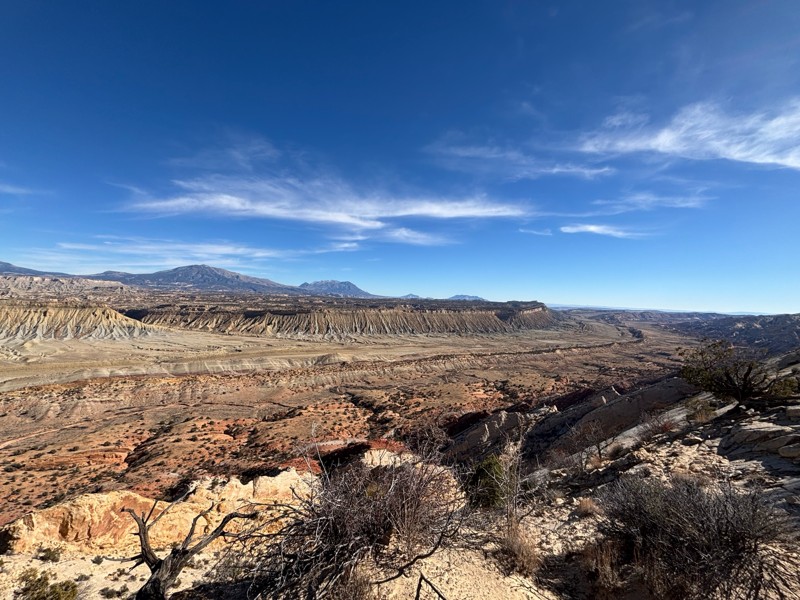
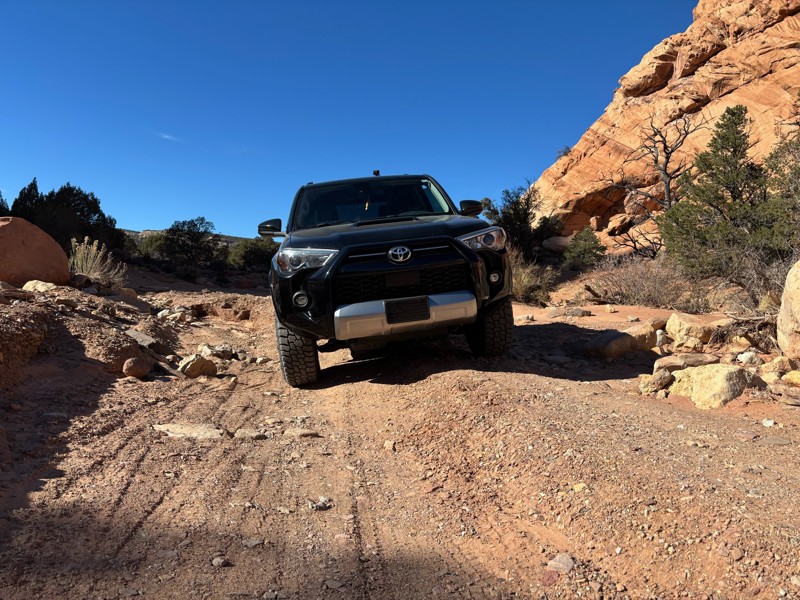
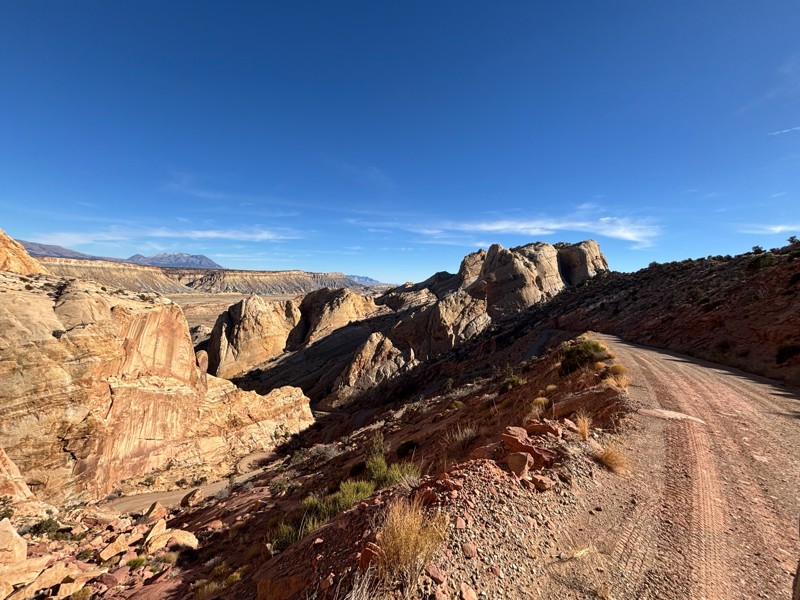
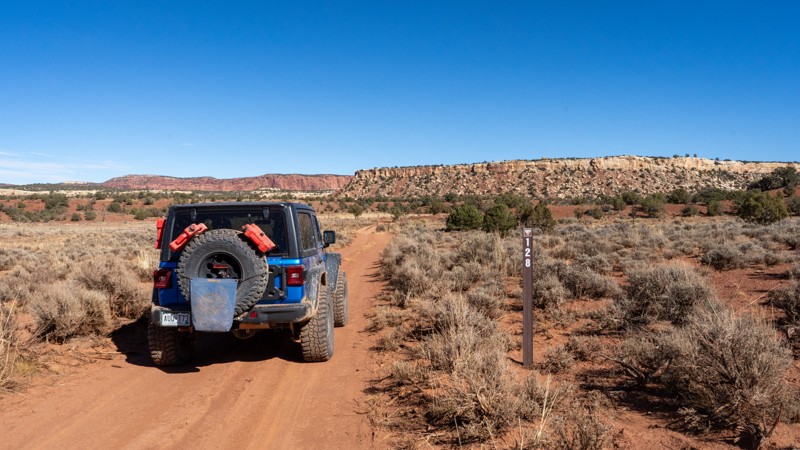
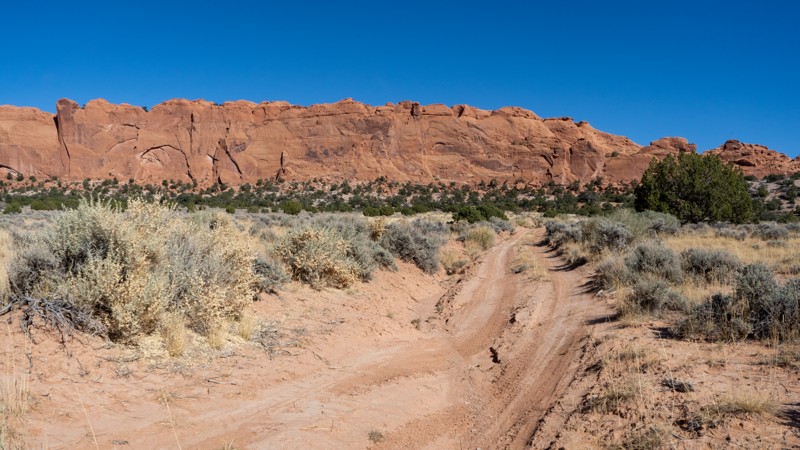
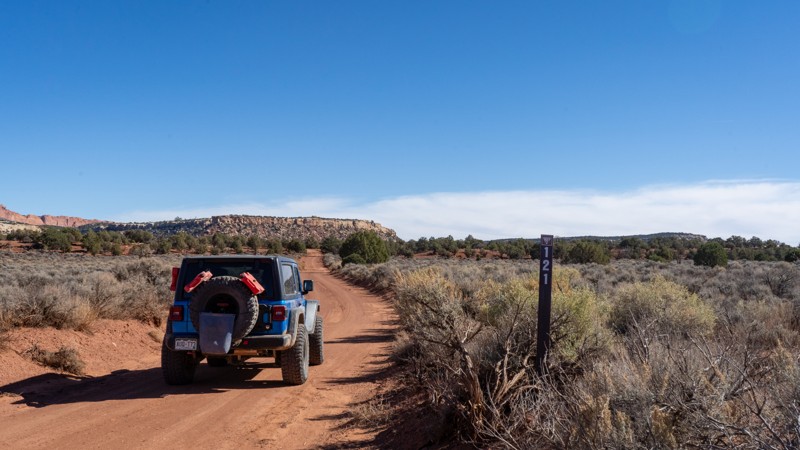
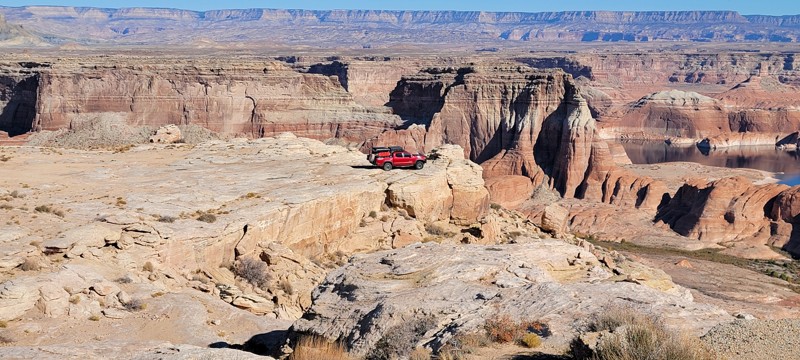
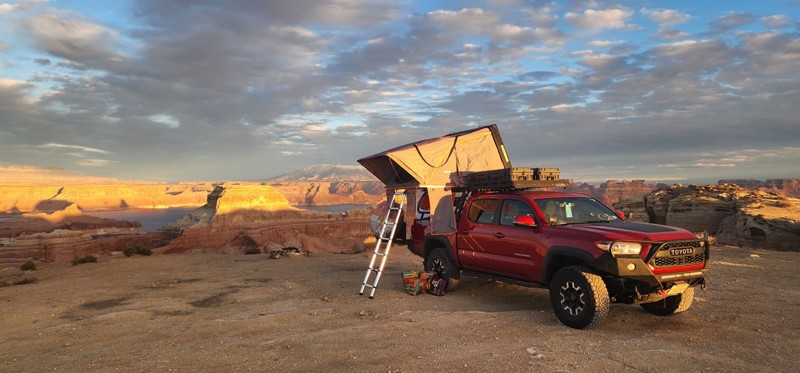
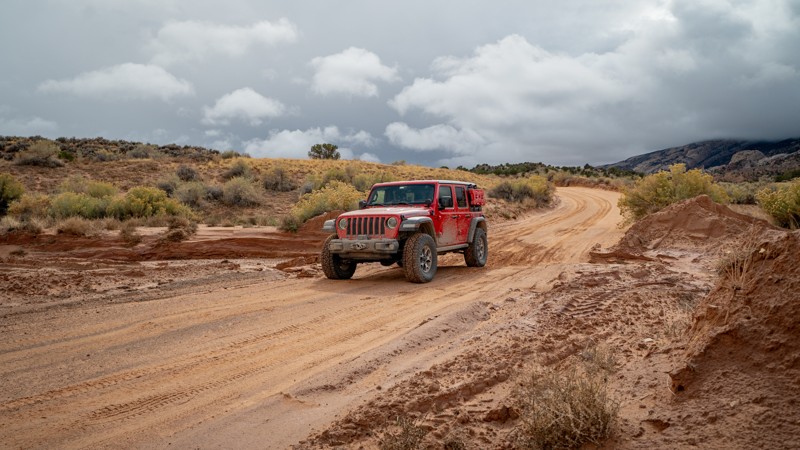
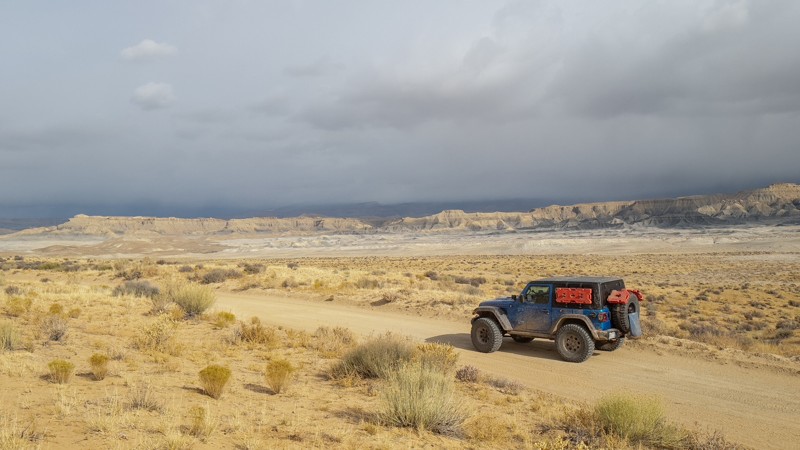
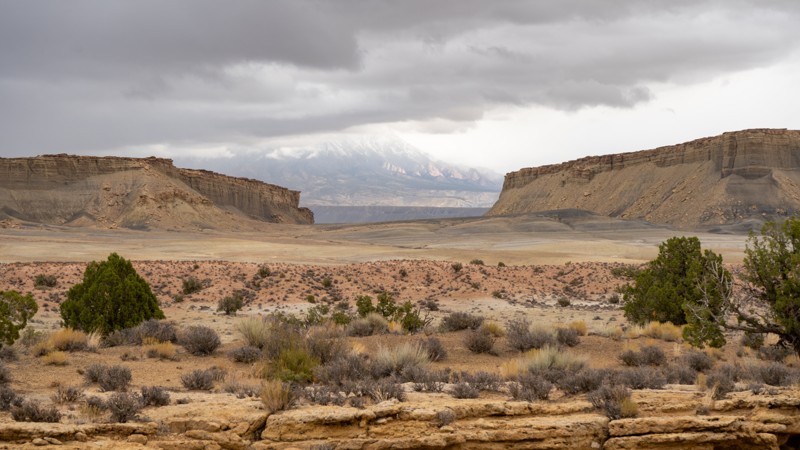
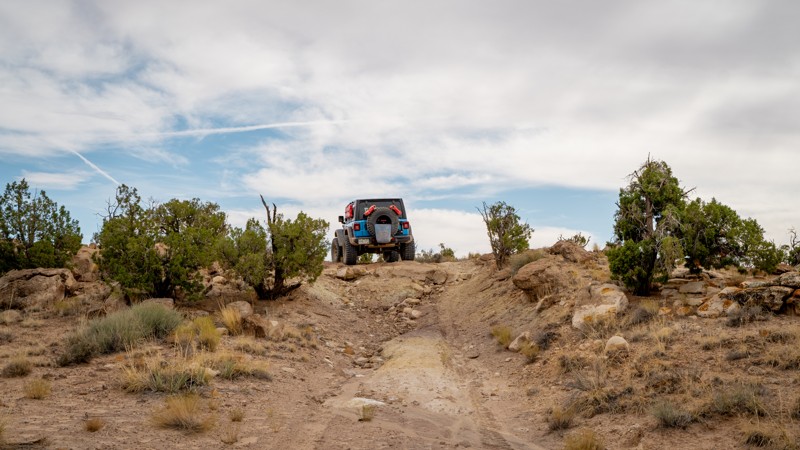
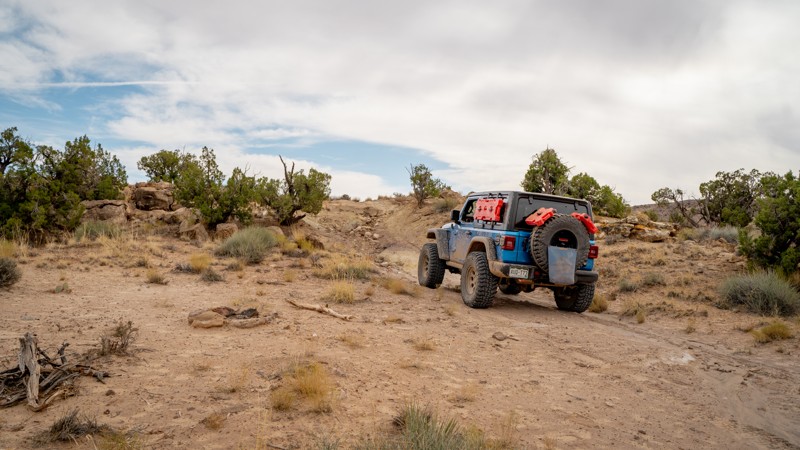
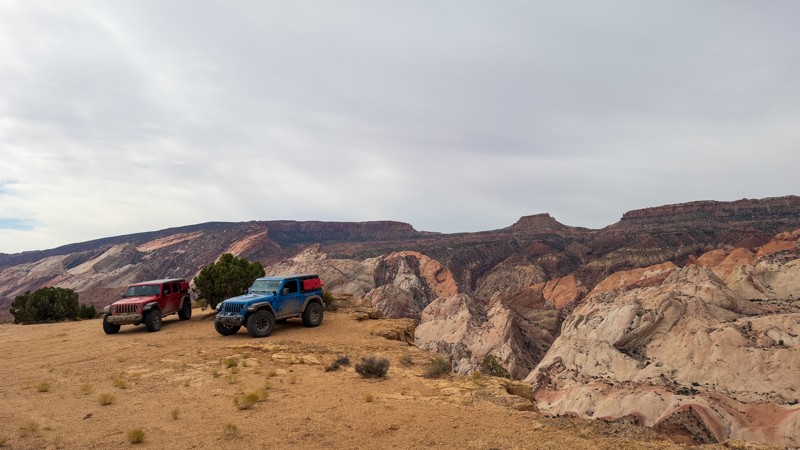
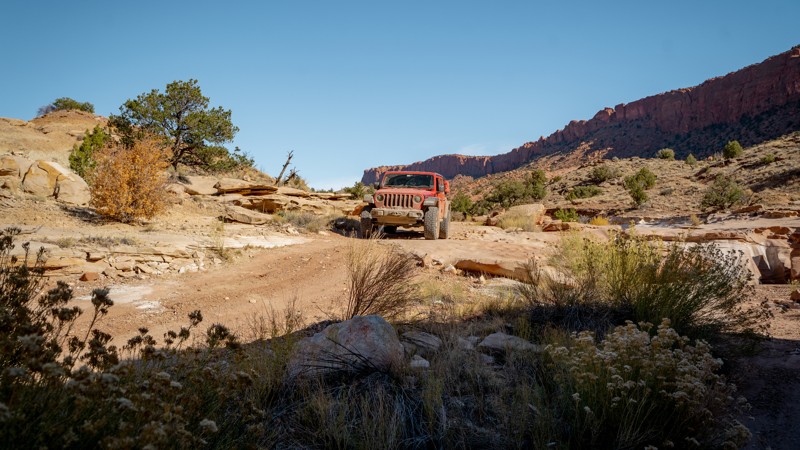
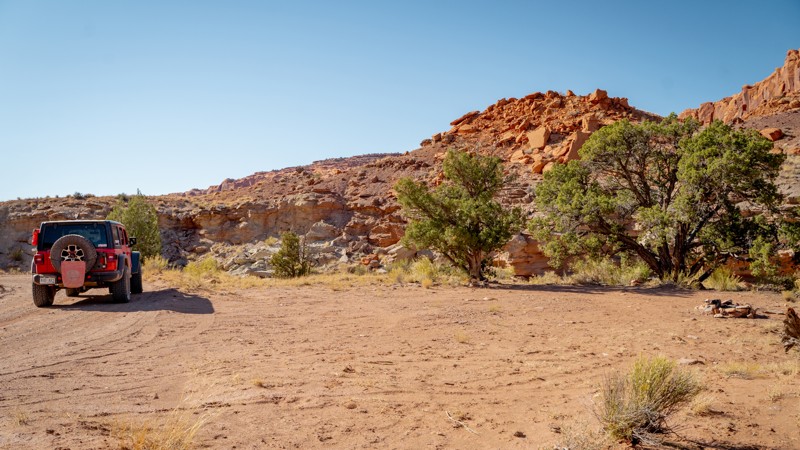
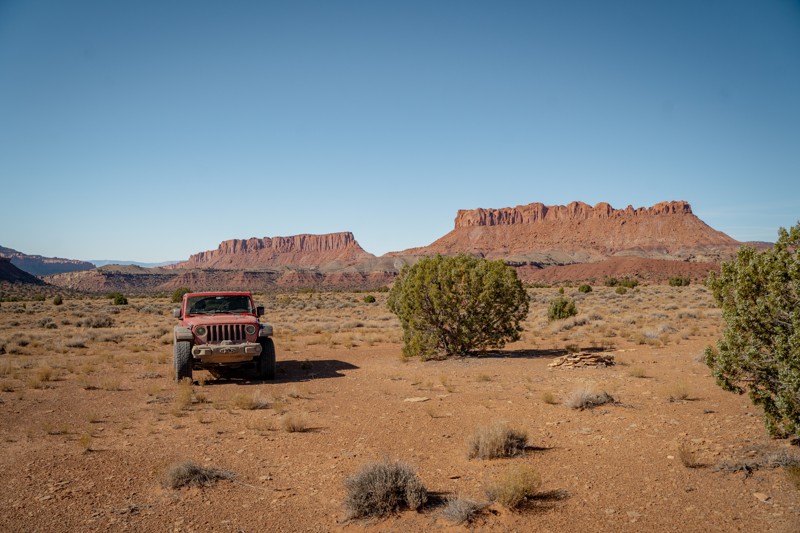
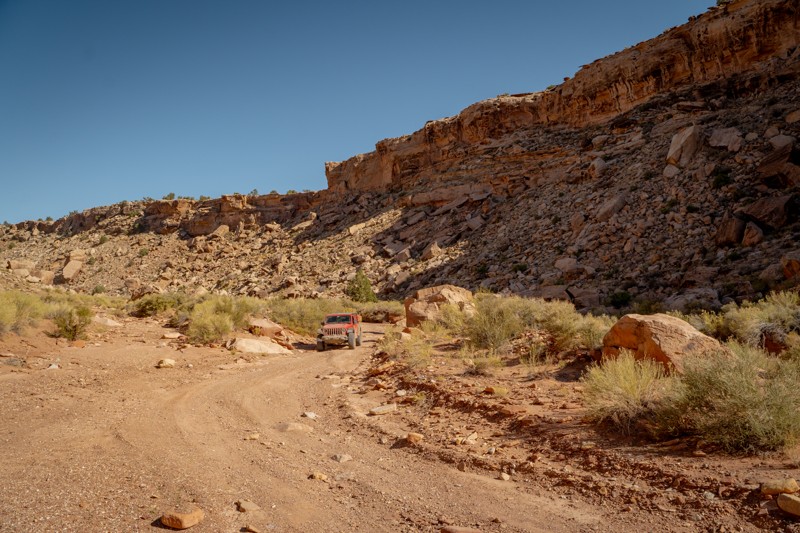
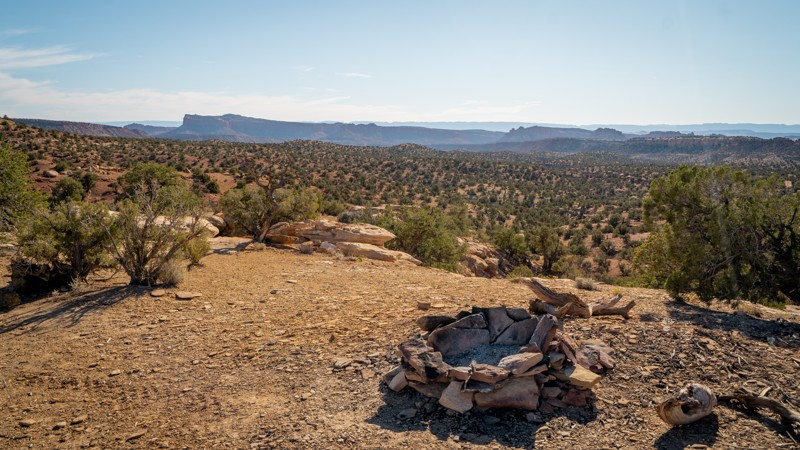
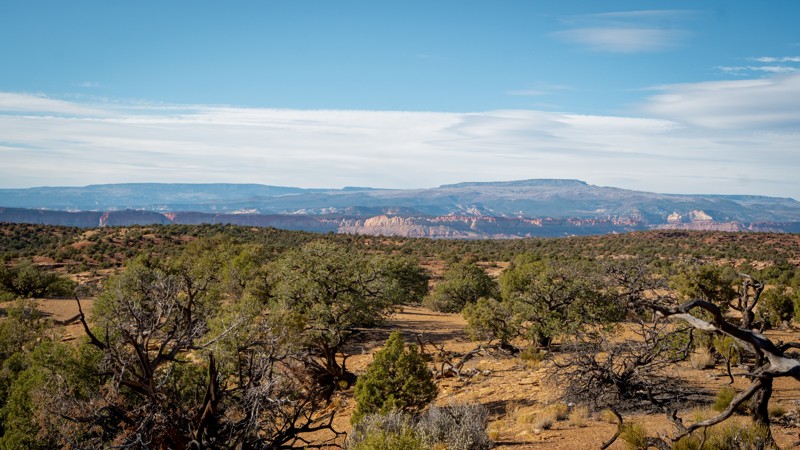
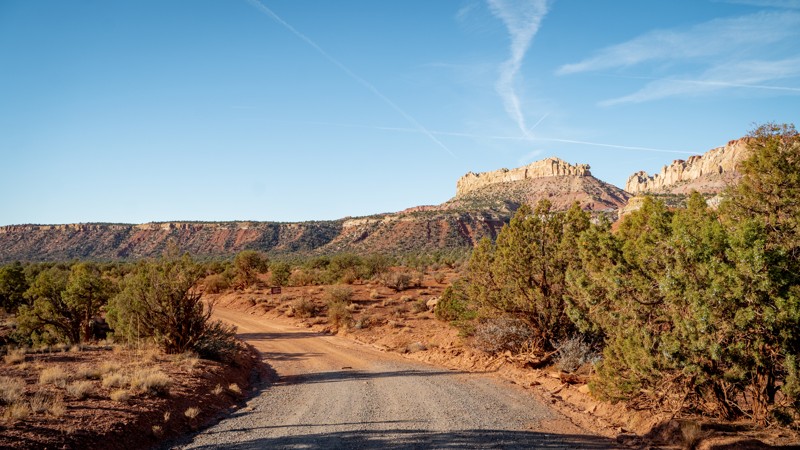
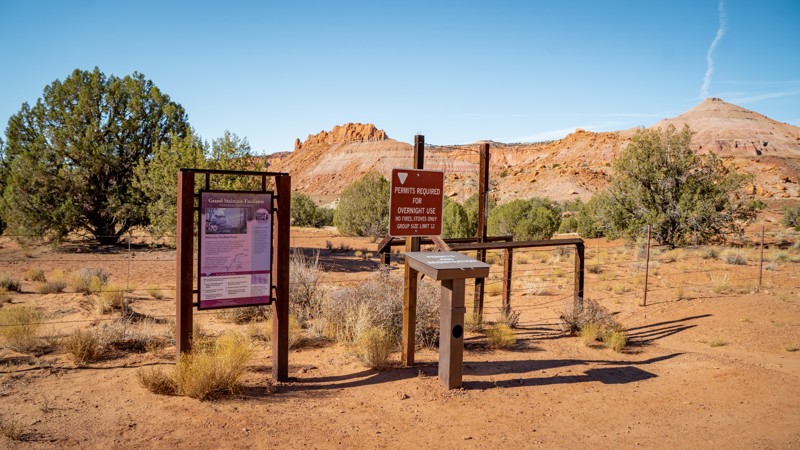
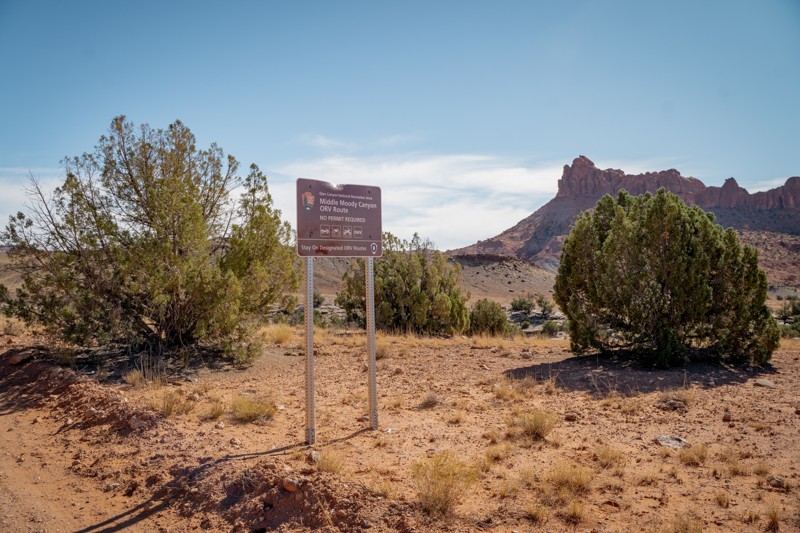
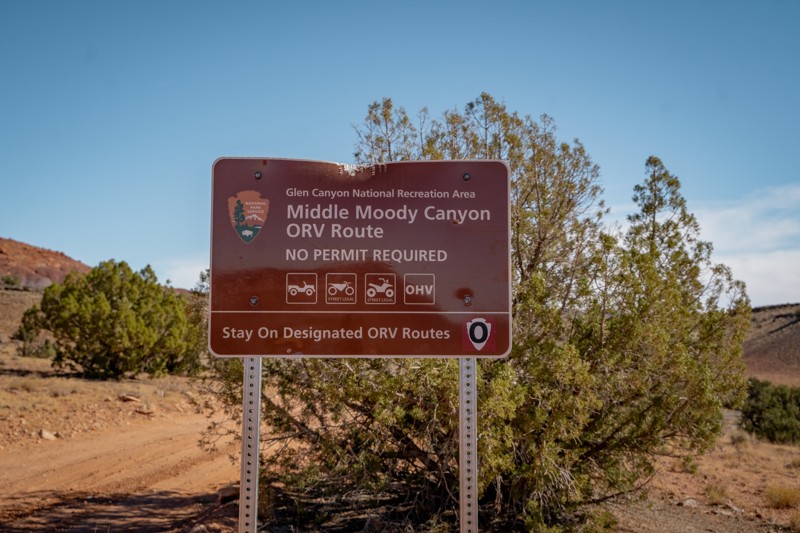
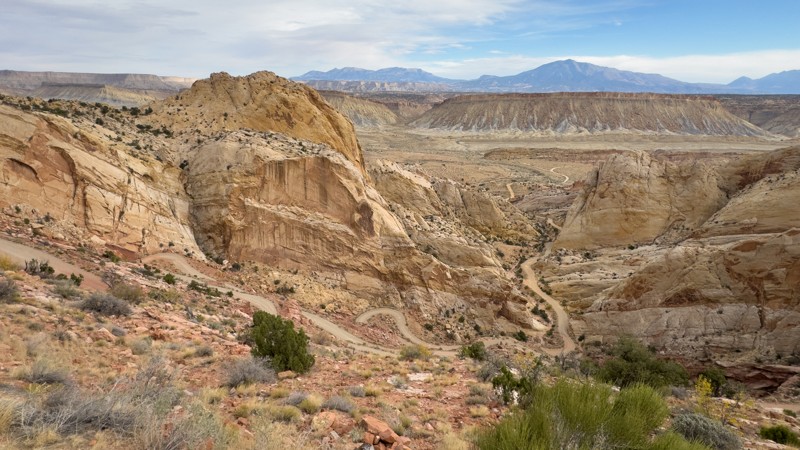
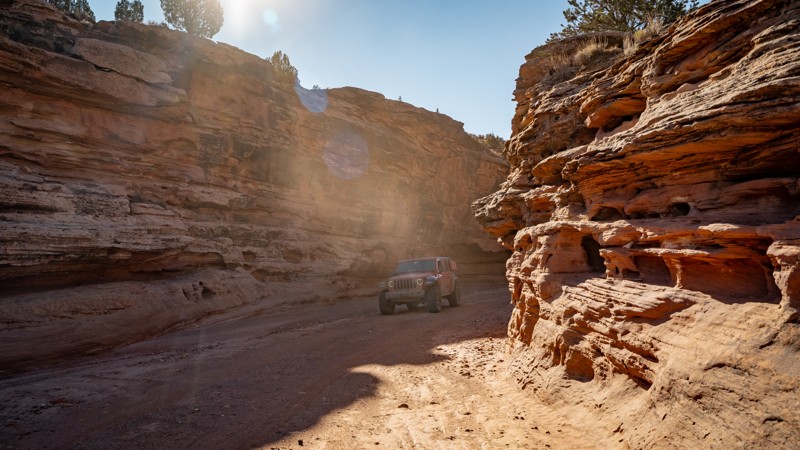
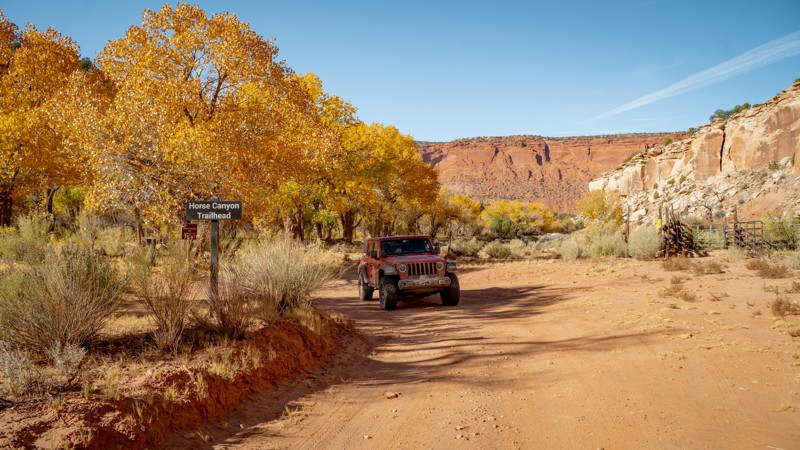
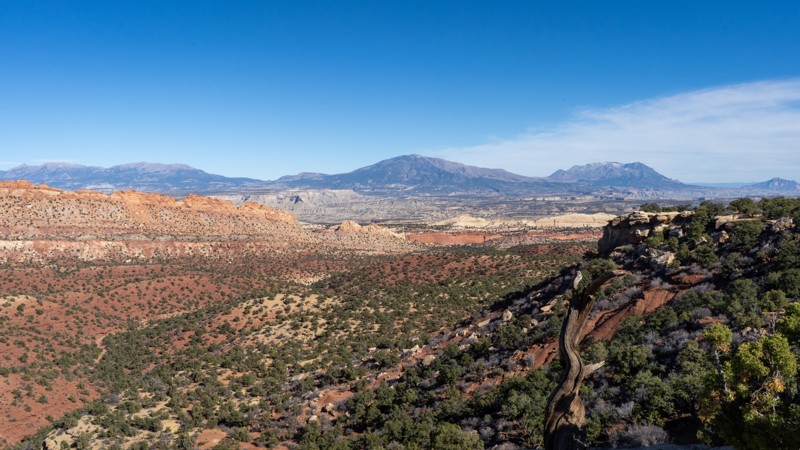
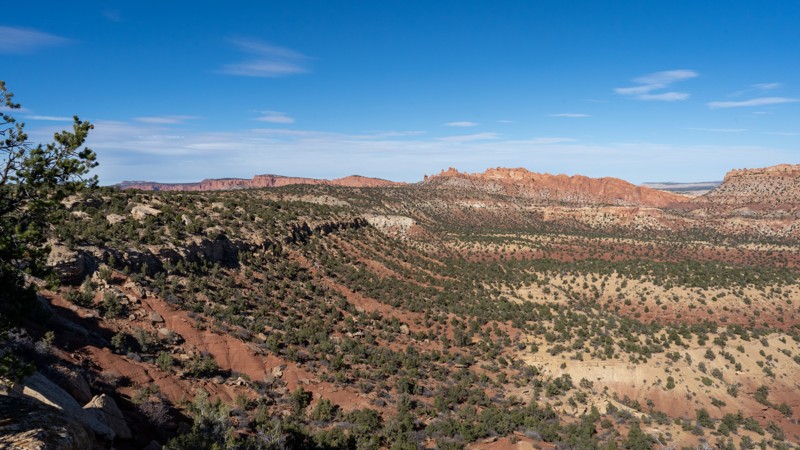
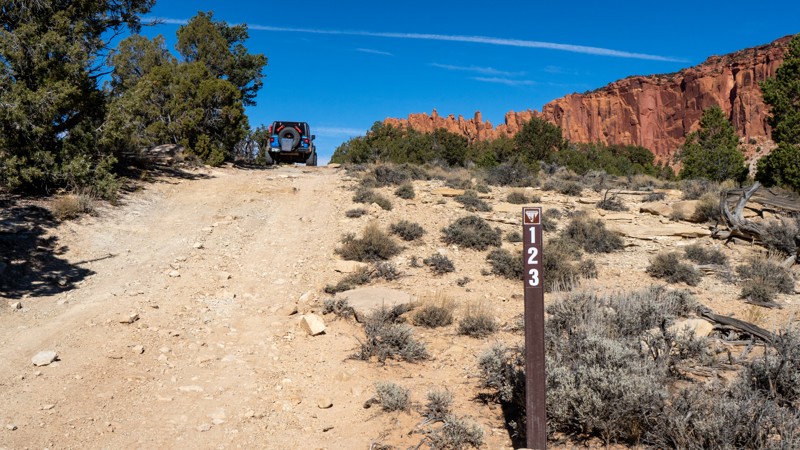
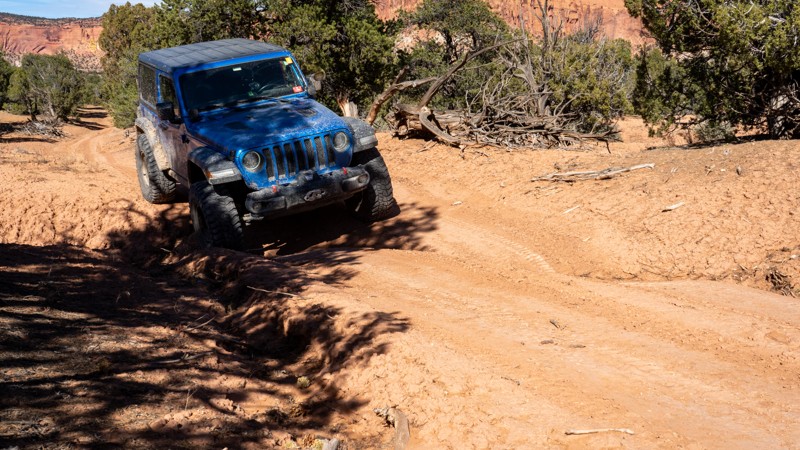
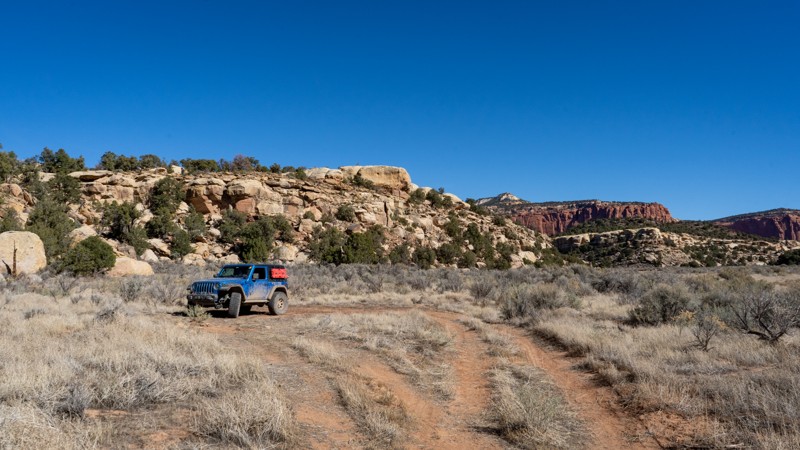
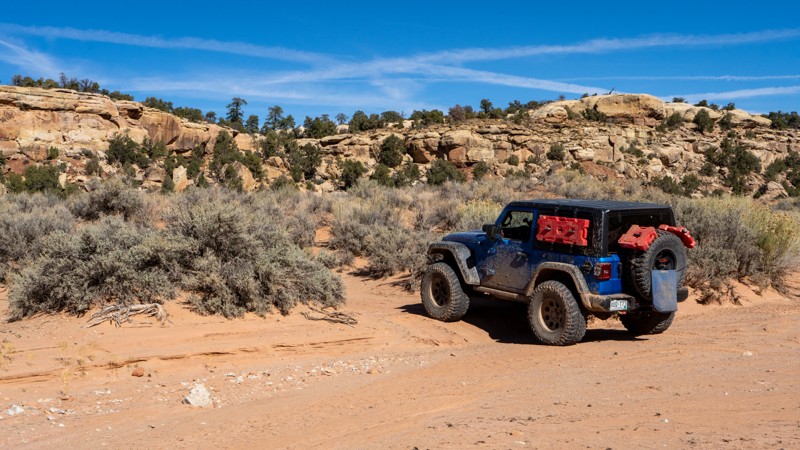
Most Popular
Croton Road
Croton Road is located in the Grand Staircase-Escalante National Monument, just north of Lake Powell. It is a great overland route option to connect the town of Escalante, Utah (SW of Capitol Reef National Park) to the Lake Powell/Glen Canyon Dam area. This trail will provide you with many scenic spots of the entire Grand Staircase-Escalante area, staying above most of the amazing terrain surrounding you. To the north of this trail is Hole in the Rock Trail, which has some amazing features such as Devils Garden and Zebra Slot Wash, which you can connect to Left Hand Collet Road, an amazing wash trail, the legendary Alstrom Point, and finally end up on Smoky Mountain Road.
Alstrom Point
Smoky Mountain Road
Have you ever wondered how a trail gets its name? Well, there is no mystery behind the naming of this trail. Smoky Mountain is aptly named due to the incredible active coal seam vents at the top of the trail, which have been burning for at least the last hundred thousand years or more! This trail is situated in the Grand Staircase - Escalante National Monument just north of Lake Powell. While not the most challenging trail in the area, this trail will take you on an epic, remote adventure through some of the most beautiful parts of Southern Utah. Once your tires hit the dirt, you will quickly start gaining elevation up to the top of Smoky Mountain. Turn after turn, majestic views of the surrounding desert plateaus will begin to appear. Take in the views, and take your time, as the shelf roads and steep walls may incite anxiety. At the top of the plateau on the short Coal Fires Road are the famous coal seam vents, which are not to be missed. A truly epic and unique experience, you can drive to these geological features. The smell of the burning coal and the glowing of the amber and mustard yellow residue along the walls of the coal seams provide an experience in itself. Overlanders can find ample camping along the way to soak in this amazing landscape and create memories that can be shared for years to come.
Hole in the Rock Road
Historic Hole in the Rock Road runs from Scenic Byway 12, ending just above the Colorado River at the geologic feature for which it's named, a steep V-shaped cut in the north wall of the Colorado River's canyon. The famous Zebra and Tunnel slot canyons are just off the road. The geologically unique Devil's Garden and Dance Hall Rock are must-stops along the way. Spur trails lead off into the Glen Canyon Recreation Area with numerous trailheads for hiking into Coyotoe Gulch and to the immense Jacob Hamblin Arch. Left Hand Collet Road climbs westward onto the remote Kaiparowitz Plateau.
Hole in the Rock Road is a historic route. In the autumn of 1879, 250 men, women, and children began one of the Southwest’s most difficult and dramatic pioneer expeditions. Their goal was to establish a settlement on the San Juan River. Their nearly 250-mile trek across virtually unexplored lands resulted in the little town of Bluff. To learn more about the Hole-in-the-Rock Pioneers, visit the Escalante Heritage Center or Bluff Fort. Additional segments of their route include Hole in the Rock Trail, Snow Flat Road, and Comb Ridge.
The northern portion of the road is graded dirt and sand with miles of continuous washboards. The southern part of the trail crosses uneven sandstone slickrock before ending just above the hole in the rock. Be prepared for 2 plus hours of dash rattling washboard. Large tires definitely help on this road. A stock SUV, pickup, or even crossover would have no problem. Clearance is required on the slickrock.
The north end of the trail is a popular boondocking area. While there are ample campsites along the trail, they get farther apart as you head south. A very nice group of sites near Fifty Mile Spring is surrounded by red rock.
Left Hand Collet Road
Crosby Canyon
Crosby Canyon is a very scenic canyon trail that follows in and out of a wash taking you from Smoky Mountain Road down to the shores of Lake Powell. When dry, the path is fairly simple but can become quite difficult if muddy. It also has the potential to be dangerous with flash floods, so users should pay close attention to the weather. The end of the trail has some deep, soft sand, thus 4WD is highly recommended. Some camping can be found at the end of the trails.
Skutumpah
Skutumpah (pronounced scoot um pa) runs east-west through the Grand Staircase Escalante National Monument from the intersections of Johnson Valley Road and Glendale Bench in the west to Cottonwood Canyon Road near Cannonville in the east. The graded road is easily passable in 2WD vehicles unless wet. When wet, the road becomes essentially impassable in any vehicle. The clay surface becomes exceptionally slick, providing virtually no traction. The road has deep ruts, steep grades, and hairpin switchbacks on the eastern end. Emergency contact stations are every 5 miles along a good portion of the remote road.
The western end is relatively dull but offers good views of the orange and pink cliffs of the Bryce Canyon area. The road crosses Deer Springs Ranch, a large plot of private land. Watch out for cattle on the trail. The eastern half of the road is far more interesting. A bridge crosses Bull Valley Gorge, a challenging canyoneering destination. Take a moment to walk onto the bridge and look down into the impressively deep sandstone gorge. Willis Slot Canyon is an easy 2-mile round trip hike through a scenic slot canyon. The trailhead has plenty of parking.
Camping is limited. The best dispersed campsite on the western end is 2 miles into the track across from one of the emergency rescue beacons. The shaded site can host up to 5 larger rigs and is suitable for tent camping. A mile from the eastern end is a superb camping area on the edge of a ridgeline capable of hosting 15 to 20 vehicles while still providing privacy. The best sites have impressive views, with Powell Point dominating the skyline. Deer Springs Ranch offers cabins and campsites. Plenty of commercial camping and lodging options exist in Cannonville, Tropic, and the beautiful Kodachrome State Park.
Nipple Creek Road
Cottonwood Canyon Road
Cottonwood Canyon Road is a great addition to anyone's southern Utah overland adventure plans. Spanning across the Grand Staircase-Escalante National Monument, the geologic features from start to finish provide endless opportunities for exploration. Perhaps the most scenic area lies along the Cockscomb, part of the East Kaibab monocline, with near vertical sandstone beds that form a sinuous hogs back of prominent, multicolored ridges. Prominent backcountry hiking and camping areas can be found in various places along the trail, making it popular for outdoor recreators of all types.
Cottonwood Canyon Road also passes near another geologic wonder, the Grosvenor Arch. Named for Gilbert Hovey Grosvenor, president of the National Geographic Society and the first full-time editor of National Geographic Magazine, the double sandstone arch towers 150 feet above the surrounding terrain.
Horse Mountain - Death Ridge
Horse Mountain and Death Ridge roads form the second and more challenging section of a scenic overland route through Grand Staircase Escalante National Monument from Cottonwood Canyon to Escalante, along with Four Mile Bench Road.
Though there is a sign at the southern end warning it is impassable to full-size vehicles, that is not usually the case. Full-size vehicles are allowed on the road and can usually travel it. However, much of the road passes through bentonite hills with highly erosive soils and is subject to frequent washouts. These washouts can narrow the road to the point where larger vehicles can't get through. These washouts also provide the main technical challenge on the route, which is on the hard end of moderate. The road is likely completely impassable in wet conditions.
Starting from the south, the first part of the road follows a ridgetop with scenic views of the surrounding badlands terrain. It then crosses through gulches and clay hills, gradually ascending Horse Mountain to Death Ridge. It eventually intersects and follows Death Ridge Road, a graded dirt road that descends the ridgeline to intersect with Smokey Mountain Road just outside Escalante.
There are a few campsites along the trail, and it would be a good route for overlanding. All backcountry camping in Grand Staircase Escalante National Monument requires a permit.
Brigham Plains Road
Tibbet Canyon
Tibbet Canyon, located on the Kaiporowtz Plateau, is a beautiful canyon that runs from Nipple Butte to Smoky Hollow. There are several unique rock formations visible throughout the drive, no matter which direction you run it. Obstacles generally consist of bumpy wash crossings, which can increase in size with every storm. Any vehicle with high ground clearance will be able to handle this trail in normal conditions, but if there is any moisture present, 4WD is likely required. The only campsite found along the trail is at its eastern end, where it intersects Smoky Hollow. It is a large and exposed site with plenty of ground for 6-8 vehicles to spread out.
Harris Wash and V Road
Harris Wash Road and V Road are technically two different roads, though they appear on the ground as one. The road leads from Hole in the Rock Road deep into a wilderness study area in the Red Breaks area of Grand Staircase Escalante National Monument. It provides the closest hiking access to the Cosmic Ashtray, one of the most famous geological features within the monument. The road is worth driving even without the hike for the spectacular views of the large Red Breaks petrified sand dunes.
The first half, Harris Wash Road, is graded dirt, usually passable in any vehicle as far as the Harris Wash trailhead. After crossing Harris Wash, the road name changes to V Road. V Road has had a history of closures and reopenings. Currently, the road appears to continue, but the latest Travel Management Plan signed in December 2024 has closed the continuation after Harris Wash. This section may reopen in the future.
There are several excellent dispersed campsites to be found along this road. All backcountry camping in Grand Staircase Escalante National Monument requires a permit, which can be obtained at the visitor center in Escalante.
Four Mile Bench
Four Mile Bench spurs off Cottonwood Canyon Road, running 14 miles into the remote Kaparowitz Plateau. The trail climbs steeply along shelf roads up the face of the plateau. It also crosses Wahweep Wash, Blue Wash, and Tommy Smith Creek. These drainages are ordinarily dry but prone to flash flooding and washouts after heavy rains. Four Mile Bench ends at an intersection with Death Ridge Road, 313, marked as impassable by full-size vehicles.
The western end of Four Mile Bench passes Grosvenor Arch. The massive sandstone arch is actually two arches. They tower 150 feet above the desert, with the larger arch measuring 100 feet wide. There is a parking area with a vault toilet for those visiting this imposing natural wonder.
East of the arch, two small campsites sit on the south side of the road. One is a single-vehicle site very close to the trail, while the other is a lollipop site further off the trail. Neither are desirable campsites. Better camping options are available along Cottonwood Canyon Road.
Upper Muley Twist Canyon
Burr Trail
The Burr Trail is a scenic, historic route in southern Utah, known for its breathtaking landscapes and rich geological features. Stretching about 68 miles with pavement from the town of Boulder to the Grand Staircase-Escalante National Monument, the trail offers stunning views of red rock canyons, towering cliffs, and mesas. Originally a cattle-driving route, the Burr Trail now attracts travelers seeking a unique drive through diverse desert terrain, including the famous Waterpocket Fold and the dramatic Capitol Reef National Park. The portion of the trail written about here is the dirt stretch spanning the National Park boundaries. It is only a matter of time before it is all paved! Regardless, this trail is a must-see for those looking to experience the rugged beauty of southern Utah's wilderness.
Cedar Wash Road
Cedar Wash Road begins off Center Street south of Escalante and connects with Hole in the Rock Road. Several small marginal campsites are along the north end of the road just after the pavement ends. These are suitable for one to two small vehicles. Hole in the Rock Road has plenty of very nice campsites.
The main draw of this otherwise nondescript road is the Cedar Wash Arch. Seeing the arch requires a short but mildly strenuous hike from the unsigned pullout.
The trail has deep sandy washes, sharp curves, and steep grades. Do not attempt if wet.
Collet Top
Wolverine Loop Road
Wolverine Loop Road is a remote trail providing access to the southernmost reaches of the Grand Staircase Escalante National Monument when traveling off the Burr Trail. Mild maintenance by the managing agency keeps this route open year-round though it can be prone to erosion at the various wash crossings due to seasonal rainfall and flash flooding. The wash crossings are considered the hardest part of the trail but are easily managble by most high-clearance 2WD vehicles when dry.
Various hiking trailheads and points of interest such as Horse Canyon TH, Wolverine Petrified Wood Natural Area, and Little Death Hollow Trailhead are all located along the trail. Scenic views are plentiful with towering red rock mesas in most directions.
Camping is not extremely plentiful, some spots are found shortly off the trail's western end, a couple more at Little Horse Canyon, and a few more off the branching trails of Silver Falls and Moody Creek Road.
If you plan to overnight camp within Grand Staircase - Escalante National Monument, be sure to obtain a Backcountry Permit at the Escalante Interagency Visitor Center or in most of the trail register boxes at hiking trailheads. Backcountry Permits for overnight stays are free and assist the BLM (Bureau of Land Management) with tracking public land use and can also assist with emergency response efforts. Day use does not require a backcountry permit, but please sign the trail register.
Bullfrog Creek Overlook
Notom Road Scenic Byway
Notom Road Scenic Byway is aptly named for its stunning views of The Reef as it travels north/south along the striking rock formations. Much of the locally known Notom Bullfrog Road has been paved, leaving only a 16-mile section of maintained dirt as it travels through the Capitol Reef National Park boundary. Regardless of the lack of technical difficulties, this stretch is still filled with scenic views and is very remote, with services being few and far between.
Those seeking to spend a weekend in the area may choose to camp at the Cedar Mesa Campground and hike to the Circle Cliffs or continue south to connect with the historic Burr Trail and traverse the steep switchbacks. Others may continue all the way south to the little hamlet of Bullfrog, where you (and your vehicle) can take the ferry across Lake Powell to Halls Crossing.
Eggnog - Star Springs Road
Eggnog - Starr Springs Road is an incredibly unique trail winding through a moon-like landscape just north of Bullfrog, Utah. Despite southern Utah being known for its red rock sandstone, this interesting little pocket of BLM land is bathed in blue and grey tones. Bentonite clay hills roll on far to the north, with a distant view of the well-known Waterpocket Fold to the west. Towering near the eastern end is Mount Hillers, a dramatic 10,000-foot-plus mountain peak with out-of-place red fins at its base. With the mashup geology, this trail is perfect for anyone in a high clearance 4WD vehicle looking to diversify their weekend overland trip.
Dispersed camping is limited to a few rocky spots along the trail. Luckily, there is a very peaceful and scenic campground at the eastern end of the trail called Starr Springs Campground. They offer a handful of designated campsites nestled among the oak tree grove, fire rings, picnic tables, and pit toilets.
Smoky Hollow
If peace and serenity are your thing, then look no further than Smoky Hollow. This trail acts as an alternate route through the mountains surrounding Smoky Mountain, the well-known feature of this area. Along the trail, you may encounter occasional washouts, as this trail does travel in a wash, but there is nothing a stock 2WD high clearance vehicle can't handle. Aside from the washouts, occasional patches of sand, possible sticky mud, and a steep climb at the end are also offered along this journey. Camping is surprisingly limited and only offered at the intersection with Tibbet Canyon (in the form of an open pullout) or at the northern end intersecting with Smoky Mountain Road. All sites are dispersed with no amenities.
Coal Fires Road
Rising from the ground in a seemingly random area is the smoke from an underground fire burning in the coal seams of Smoky Mountain. It is unknown when the fire started or how, but it is here to stay until the fuel has run out. Experts have tried extinguishing the fire, but new seams have opened, showing their failed attempts. These fires burn around 1,000 feet below the mudstone and sandstone known as the Straight Cliffs Formation. Although you can always smell the putrid odor, smoke may only be visible when temperatures are near or below freezing. Please be very cautious when exploring the seams as they are open holes with nauseating fumes that cling to clothing. Any vehicle with adequate ground clearance can drive this trail. Camping is rather limited to a few small, lightly-used sites. Better camping can be found along Smoky Mountain Road.
Moody Creek Road
Across its nearly 20-mile stretch, Moody Creek Road offers quite a few experiences. Beginning as a well-used dirt road within the Grand Staircase Escalante National Monument, the landscape is quintessential southern Utah, with towering red rock plateaus in most directions. As the trail works its way south, you will snake between the bases of Colt and Horse Pasture Mesas, where the trail narrows using a wash area to travel the canyons. You may notice a signage shift as you cross from the national monument over to Glen Canyon National Recreation Area lands. The first 14 miles of trail are traversable by high-clearance 2WD vehicles in dry conditions. Should you choose to push on, the final 3 miles of the trail make a bump in difficulty as conditions quickly shift to that of a true 'Jeep trail' with large ruts, rocky ledges, and steep climbs. The bumpy trek finally ends atop Four Mile Bench at the base of very colorful purple hills with stunning views of the surrounding rock formations.
Dispersed campsites are mostly limited to one just before the Silver Falls spur, a couple nested along the base of Colt Mesa (after the gate and coral), and one more along the final 3-mile stretch towards the purple hills.
If you plan to overnight camp within Grand Staircase - Escalante National Monument, be sure to obtain a Backcountry Permit at the Escalante Interagency Visitor Center or in most of the trail register boxes at hiking trailheads. Backcountry Permits for overnight stays are free and assist the BLM (Bureau of Land Management) with tracking public land use and can also assist with emergency response efforts. Day use does not require a backcountry permit, but please sign the trail register.
Heads of the Creek
Heads of the Creek is a scenic trail that spans between Smoky Mountain Road and the intersections of Nipple Creek Road and Tibbet Canyon. Bordering along the Wahweap Wilderness Study, the trail drops in and out of washes and curves around the bases of unique formations like Pilot Rock, Weness Cove, John Henry Bench, and Clints Cove.
Camping is very limited on Heads of Creek. Most suitable spots have become popular with free-range cattle, making them places you would likely only want to stay at in a pinch.
Although no substantial obstacles are found on Heads of the Creek, this area is a major drainage for seasonal rain, meaning wash-outs can form quickly and increase the trail's difficulty, if not make it impassable completely. Mud in this area is notorious for stranding motorists until conditions dry out.
Big Thompson Mesa Road
The Big Thompson Mesa Road in southern Utah offers a scenic drive through the heart of the region’s striking desert landscapes. This rough dirt road winds through the high desert, providing access to remote areas of natural beauty, including red rock formations, expansive mesas, and sweeping views of the surrounding canyons and valleys, including Water Pocket Fold. Although it is not as well known, Big Thompson Mesa Road is a worthy trip for offroad enthusiasts and adventurous travelers seeking a more isolated, off-the-beaten-path experience. The area’s rich geological features and dramatic vistas make it a hidden gem for those exploring southern Utah’s wild landscapes away from the more crowded tourist spots.
Lampstand Road
Acting as the main thoroughfare through a network of short spurs, Lampstand Road is a relatively maintained dirt road stretching from the Burr Trail into the Dixie National Forest near Impossible Peak. The bulk of the trail within the BLM boundaries is maintained with nothing more than a small washout slowing you down. Once you cross the border into the National Forest, the trail gets a little rougher with one small patch of exposed rocks where high clearance will be necessary. The trail forks a short distance after this obstacle, with tracks heading both north and south. Although the trail continues, it is severely washed out, and full-size vehicles cannot continue much farther. If you are trying to access the Stair Canyon hiking trail, park at the fork and walk the remaining portion of the trail.
Camping is available in many places along the trail in the form of dispersed camping. The nearest developed camping is Deer Creek Campground, located west on the Burr Trail, or Cedar Mesa Campground on Notom Road Scenic Byway.
Rock Spring Bench Road
Rock Springs Bench Road is the first of many spurs you will encounter when driving the popular Cottonwood Canyon Road. This trail is unmaintained packed dirt, traversing a typical southern Utah desert landscape with wash crossings, occasional steep hills, and exposed embedded rocky patches. The most difficult part of this trail is the steep entry and exit from a few wash crossings. Long-wheelbase vehicles with bad approach or departure angles may struggle. One climb up a fin of dirt provides a small rock obstacle, but nothing that a stock high clearance 4WD vehicle can't handle. Views of the expansive terrain are the main draw for this out-and-back spur. Camping is limited to a few dispersed locations along the first stretch of the trail, offering no amenities.
Coyote Valley Road
Coyote Valley Road is an easy dirt route serving as a southern connector between Cottonwood Road and Brigham Plains Road. A couple of campsites can be found at the southwestern end of the trail that are very exposed to the elements and are easily accessible, making them popular with trailer boondockers. Although Coyote Valley has no significant obstacles when rain falls in the area, the mud that forms is notorious for creating impassable conditions for nearly all vehicles. In dry conditions, the hardest part of the trail is a wash crossing at the northern end that may change in difficulty with erosion from seasonal rain. The colors of the surrounding plateaus frequently change from cool blue tones to golden hues depending on lighting and weather conditions. Have your camera ready!
Muley Twist Overlook
Tucked away off the lightly used Sinkholes trail is a BLM 2-track leading to a gem of an overlook. From the moment you start this trail, bumps and washouts will keep you at a slow pace. Once you begin to climb a bit, a few rocky patches will emerge, warranting the need for 4WD and high clearance. Along the ridgeline, there are a few spots to pull over and view the impressive sights overlooking the Upper Muley Twist region. Camping is limited to one to two small, makeshift sites along the cliff edge, that are exposed to winds.
Wolverine Bypass
Wolverine Bypass provides a cut-over for those seeking to shorten their trip along Wolverine Loop Road. The trail is well-traveled and journeys through an area filled with scrubby juniper trees, dipping briefly into a windy section of a shallow canyon. A couple of campsites are located at the northern end of Wolverine Bypass, one with a scenic view of the surrounding mesas. The trail is suitable for any stock high-clearance vehicle in dry conditions, but be aware that seasonal rainfall creates flash flooding in the area.
If you plan to overnight camp within Grand Staircase - Escalante National Monument, be sure to obtain a Backcountry Permit at the Escalante Interagency Visitor Center or in most of the trail register boxes at hiking trailheads. Backcountry Permits for overnight stays are free and assist the BLM (Bureau of Land Management) with tracking public land use and can also assist with emergency response efforts. Day use does not require a backcountry permit, but please sign the trail register.
Brinkerhoff Spring
122 is a short camping spur leading off Lampstand Road and back to the cliffs. At the end, you will find evidence of an old corral and a dirty water tank. The only "moderately" difficult portions of the trail lie after the final camping options once you hit the final few hundred yards of trail. Washouts have caused deep ruts that will flex a stock suspension. If you are just interested in camping, this trail is just a bumpy dirt road. Camping is all small and only suitable for 1-2 vehicles.
Sinkholes
Looping around and joining 121 to the Burr Trail pavement is Sinkholes, an unmaintained 2-track through junipers, pinyons, and open fields of sagebrush. This trail has a few minor washouts where high clearance is necessary. Even with the washouts, 2WD should be adequate to handle this bumpy trail. Despite the name, no sinkholes were found along the trail! The closest thing you will find is the large ravine alongside the southern end of the trail, with clear evidence of major flash floods. Camping is relatively limited to a few small campsites that may accommodate 1-2 vehicles each.
Horse Canyon Road
Horse Canyon Road is a spur off of Wolverine Loop Road, providing access to its namesake. Horse Canyon, as a geological feature, travels south to connect with Wolverine Canyon, Death Hollow, and eventually the Escalante River. Those seeking camping along Wolverine Loop Road can find an open site at the trailhead for Horse Canyon Road and one more shortly before the trailhead register, both of which have shade from large cottonwood trees that grow in the area. Overnight camping permits are required and free of charge, permit slips should be located in the trailhead register. Horse Canyon Road falls within the Grand Staircase-Escalante National Monument Resource Management Plan (RMP) for 2024, limiting travel beyond the mapped track.
BLM 12260
BLM 12260 spans just over 3.25 miles as it runs parallel to The Reef before dead-ending at a scenic view of Long Canyon. Two campsites are found along the trail, with the larger one nestled among large boulders and the much smaller site at the base of the hardest part of the trail, a crumbly rock ledge. The uneven ground at the end of the trail makes it ill-suited for camping, but a great spot to take a lunch break. The trail is easy most of the way, made up of primarily rough dirt with small fist-sized rocks. However, halfway through the trail, you will encounter a 1-foot crumbly rock ledge on a small hill that necessitates the need for a high clearance, 4-wheel drive vehicle.
There is loads to see in the general area, from the big views of the southern end of The Reef to colorful bentonite hills and the sheer cliffs of deep canyons. Be sure to bring your camera and some extra time in the schedule to take it all in.
Round Valley Road
Jogging north off Cottonwood Canyon Road, this maintained dirt road provides access to a small plot of Utah State land. Although the final destination is nothing spectacular, this trail does provide a few small camping locations on the ridge overlooking the mountains surrounding Cannonville and Tropic. These campsites are only large enough for 1-2 vehicles and have little in the way of flat ground for tents. The most difficult part of the trail is the descent into the small valley, with loose gravel covering the groomed dirt. Stock high-clearance vehicles will do just fine. Although the trail appears to continue around the fenced-off state land, official maps for the area do not list this portion, so please return the way you came.
123
Branching off Brinkerhoff Spring, 123 is a longer spur leading to a very random dead end with little room to turn around. The draw for this spur is the hiking offered that leads to the nearby plateau, with incredible views of the surrounding valley and cliffs. Obstacles along the trail include washouts and loose, chunky rocks that should pose no threat to stock, high-clearance 4WD vehicles. Camping is limited along this route and is all in the form of dispersed sites.
Middle Moody Canyon ORV Route
The Middle Moody Canyon ORV Route is a spur off Moody Creek Road within the Glen Canyon National Recreation Area (NRA). This is what the Glen Canyon NRA considers a Designated ORV Route and is open to conventional vehicles, OHVs, and street-legal ATVs. The route is a short 2-mile out-and-back and dead ends at a sizable turnaround spot with beautiful views of Middle Moody Canyon. The only camping on this trail would be at the turnaround spot, meaning you may have company if you stay there. This area is extremely remote and is the farthest south you can get within the Glen Canyon NRA via motorized travel when accessing from Burr Trail to the north. The hardest part you will encounter is a short and somewhat steep climb with patches of loose shale material that a stock 4WD vehicle can easily traverse.
Silver Falls Road
Silver Falls Road is a short 3.5-mile out-and-back trail traveling into the wide mouth of a canyon that eventually narrows as the path of Silver Falls Creek makes its way to the Escalante River. The motorized route comes to a dead-end at the boundary of the Glen Canyon National Recreation Area.
The general area around the start of the trail is also home to the historic Sneaky Prospect and Hotshot Prospect uranium mines, which are part of the Circle Cliffs Mining District.
A dispersed campsite can be found roughly 3 miles down the trail, with two more at the very end. If you plan to overnight camp within Grand Staircase - Escalante National Monument, be sure to obtain a Backcountry Permit at the Escalante Interagency Visitor Center or in most of the trail register boxes at hiking trailheads. Backcountry Permits for overnight stays are free and assist the BLM (Bureau of Land Management) with tracking public land use and can also assist with emergency response efforts. Day use does not require a backcountry permit, but please sign the trail register.
Prospect
Jogging south off Lampstand Road is BLM 125. This graded dirt road leads back into the juniper and pinyon trees. 2WD vehicles with high ground clearance are more than adequate to complete this trail. Camping is the main reason to travel, with a couple of nice sites tucked away from the more crowded Burr Trail options. Hiking is also available at the trail's end, heading back towards Egg Canyon and Lamanite Arch.
Round Valley Draw
Providing access to the Round Valley Draw hiking trailhead, BLM 422 lies within the Grand Staircase - Escalante National Monument and stops short of the Paria-Hackberry Wilderness Study Area. A single campsite large enough for 1-2 vehicles is found at the end of the trail across from the small hiking trailhead parking area and registration box. Although the road seems to continue, clear signage is present after the parking area marking the end of BLM 422. This is likely due to the presence of the Wilderness Study Area and the revisions to the Travel Management Plan that have been taking place within the Grand Staircase - Escalante National Monument.
If you plan to overnight camp within Grand Staircase - Escalante National Monument, be sure to obtain a Backcountry Permit at the Escalante Interagency Visitor Center or in most of the trail register boxes at hiking trailheads. Backcountry Permits for overnight stays are free and assist the BLM (Bureau of Land Management) with tracking public land use and can also assist with emergency response efforts. Day use does not require a backcountry permit, but please sign the trail register.
121
121 is a simple through-trail connecting Lampstand Road to the eastern paved portion of the Burr Trail. This is a well-maintained dirt road with no obstacles. Camping is limited to a couple of sites near the Burr Trail intersection. The good thing about these sites is that they are some of the few larger campsites in the area, able to accommodate 5-6 rigs and ground tents.
124
Another camping spur branching off of Lampstand Road, 124 is an easy route to a campsite nestled in a handful of large boulders. The trail crosses a wash and seemingly dead-ends in a sagebrush field, where another, less desirable campsite lies. Impressive views of the Lampstand are had from the entirety of this trail as you drive just north of its shadow. Although not a destination itself, 124 provides relief from the more busy areas of the Burr Trail, offering peace and quiet to those looking to set up camp for the night.
126
Branching off Lampstand Road, 126 is a short and sweet spur providing numerous camping options away from the more popular sites located close to the Burr Trail. There are no obstacles, and this trail is occasionally graded, so the only obstacles you may encounter are ruts and washouts from recent rain storms. Any vehicle with decent ground clearance will be able to complete this short spur. Campsites are dotted among the shady juniper and pinyon trees and are generally large enough for 1-2 vehicles with tents.

Upgrade your Membership
Unlock all of the details on every Trail Guide and Scout Route.
Start a 7-day Free Trial